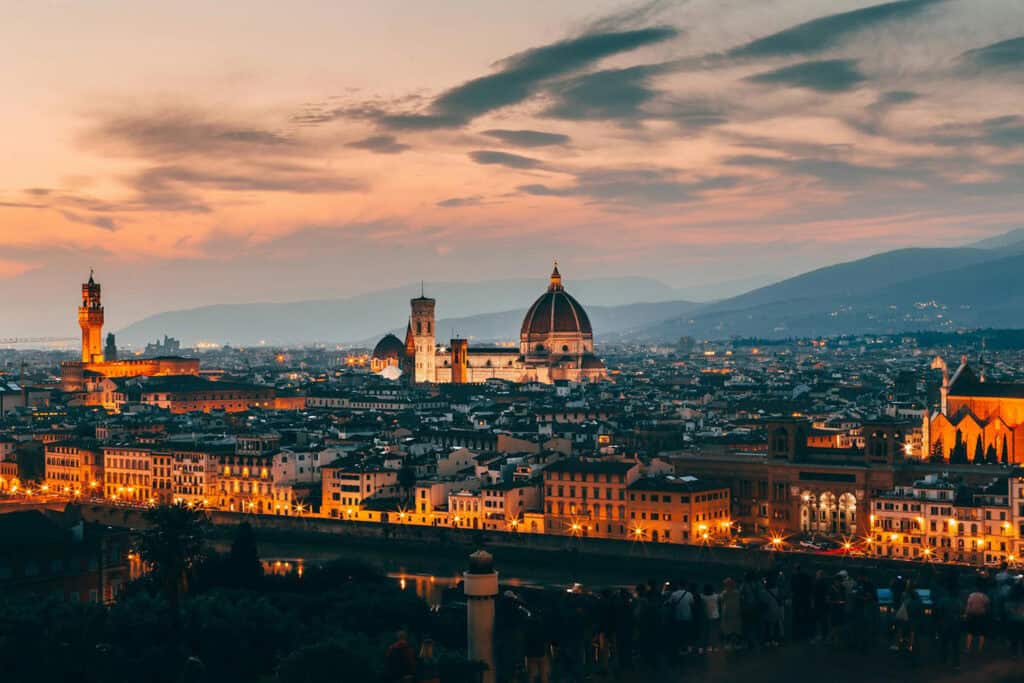
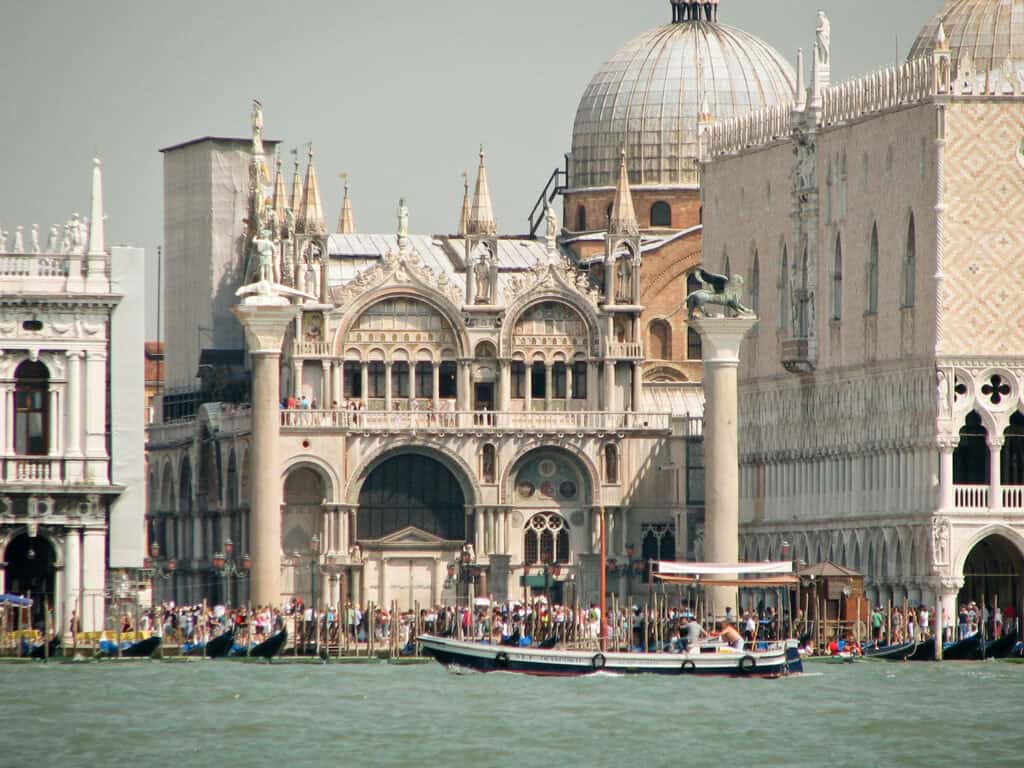
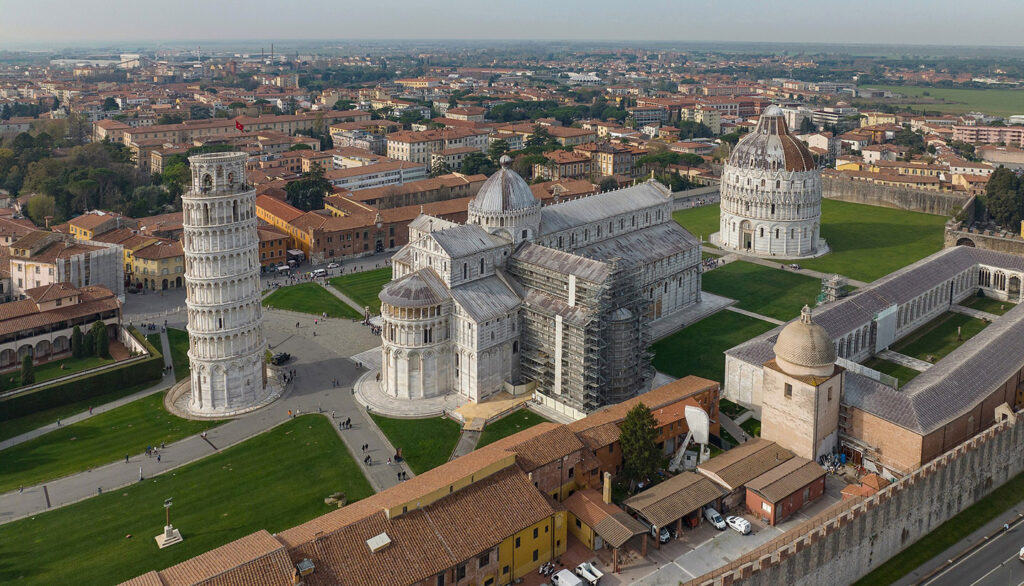
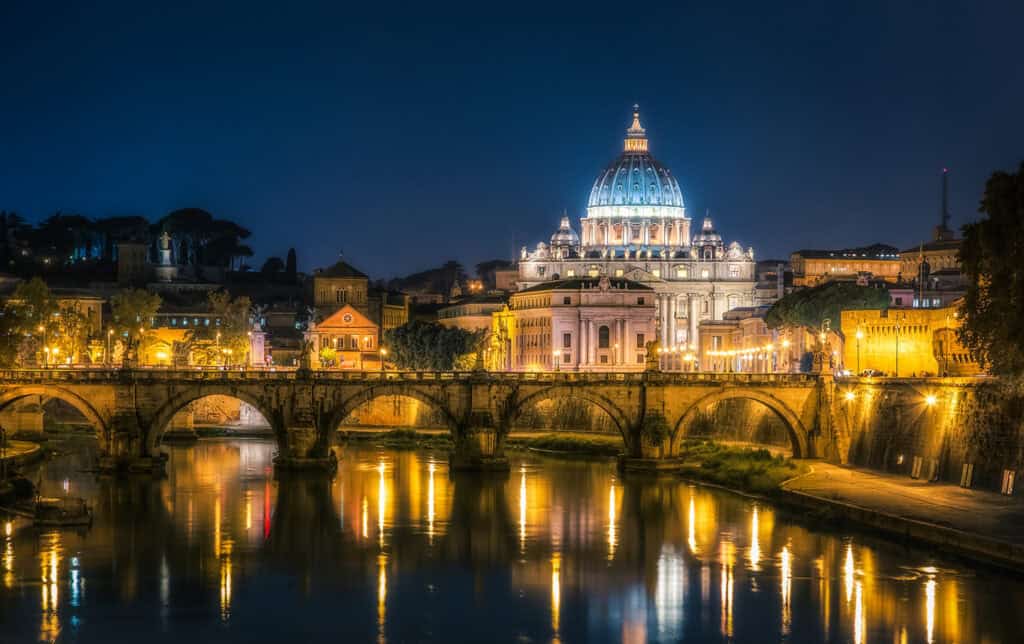
Ever wondered how Italy’s architectural masterpieces have shaped the world over centuries? From the majestic Colosseum to the cutting-edge Vertical Forest, Italy’s iconic buildings offer a thrilling glimpse into architectural evolution.
If you’re eager to explore the grandeur of Italy’s diverse architectural styles, you’re in for a treat. At Landmarks Architects, we’re excited to guide you through this journey.
In this article, you’ll discover:
- The ancient marvels of Rome
- Byzantine splendors like St. Mark’s Basilica
- Timeless Romanesque and Gothic masterpieces
- Baroque extravagance
- Neoclassical elegance
- Modern and Contemporary innovations
Get ready to investigate Italy’s architectural treasures and uncover the stories behind these iconic landmarks. Continue reading to see how these structures have left an indelible mark on history and design.
See Also Italy Landmarks
Ancient Roman Architecture
Ancient Roman architecture is one of the most remarkable architectural marvels in the world. It is an iconic landmark that has shaped Italy’s cultural identity and remains a major tourist attraction to this day. The ancient Roman city was home to many famous buildings and monuments, including the Colosseum, the Pantheon, and the Roman Forum.
1. Colosseum

The Colosseum is one of the most famous landmarks in Italy and an impressive sight to behold. It was built in 72 AD and was used for gladiator battles and other public spectacles. The Colosseum is an ancient Roman amphitheater, and it is estimated that it could hold up to 50,000 spectators. Today, it is a major tourist attraction and a symbol of the Roman era.
2. Pantheon
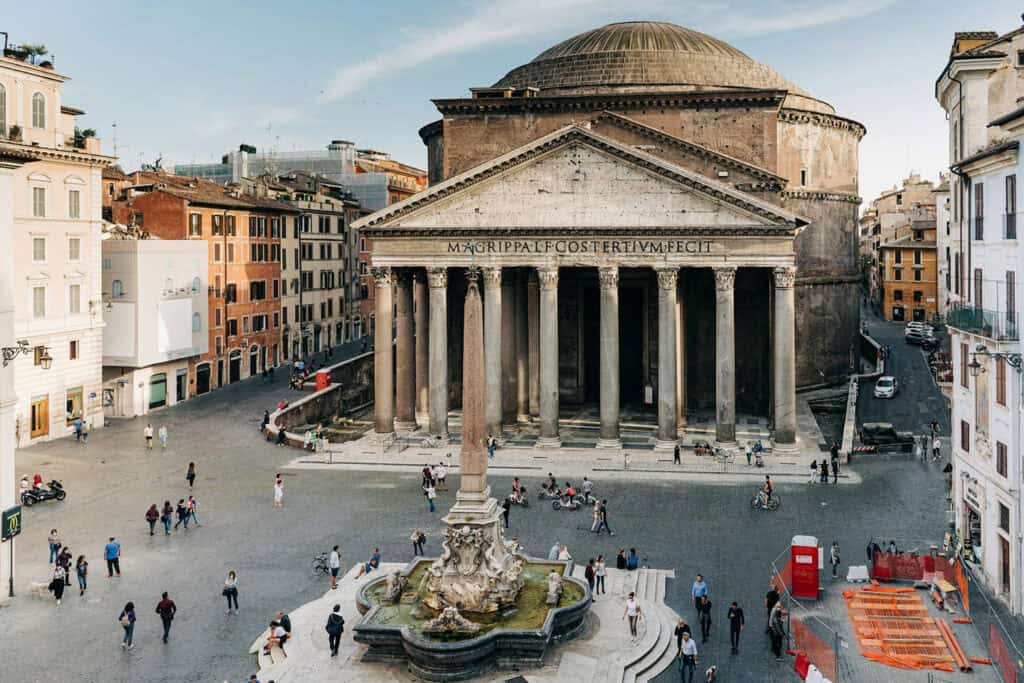
The Pantheon is a Roman temple that was built in the second century AD. It is one of the most remarkable architectural achievements of ancient Rome. The temple was dedicated to all the Roman gods and is known for its impressive dome. The Pantheon is now a church and is a major tourist attraction in the historical center of Rome.
The Pantheon
3. Roman Forum

The Roman Forum was the center of political and social activity in ancient Rome. It was the heart of the city and is home to many ancient buildings and monuments. The Forum was the site of many important events in Roman history, including the funeral of Julius Caesar. Today, it is a major tourist attraction and a reminder of the rich history that took place in ancient Rome.
See Also Famous Buildings in Ancient Rome
Byzantine and Early Christian Architecture
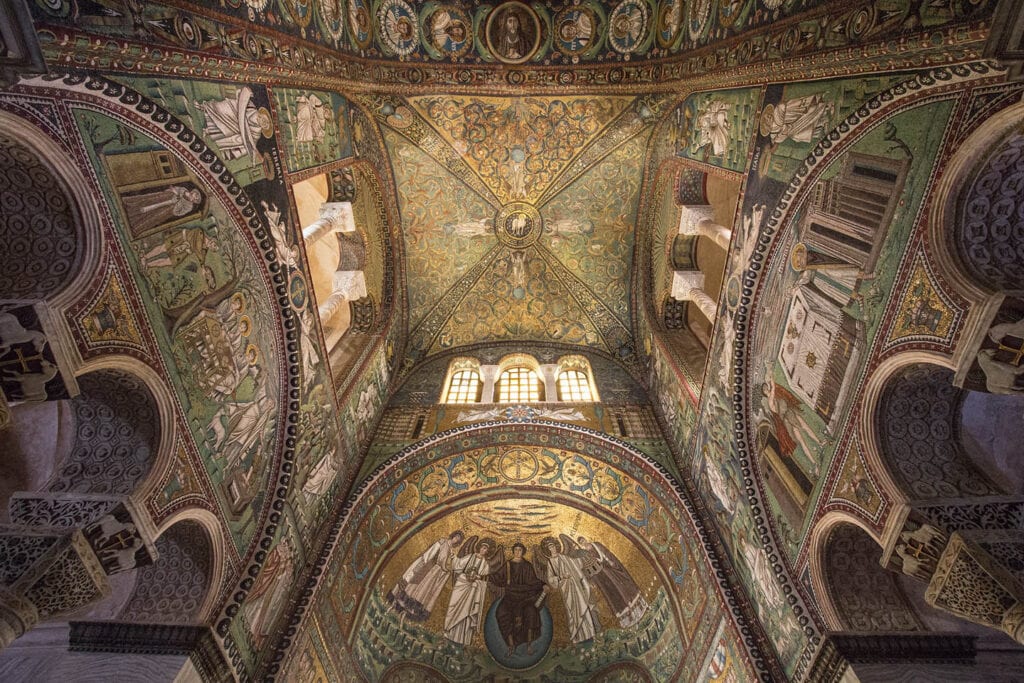
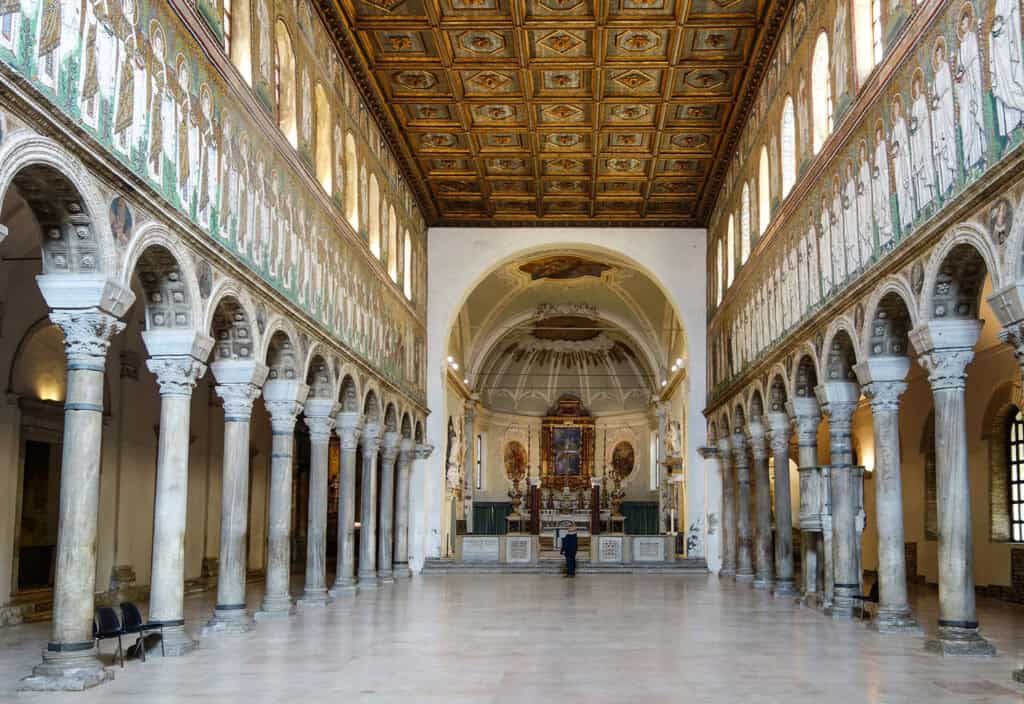
Byzantine and Early Christian Architecture in Italy is a fascinating subject that has produced some of the most impressive buildings in the world. One of the most famous examples is St. Mark’s Basilica in Venice, which was originally built in the 9th century and is a stunning example of Byzantine architecture.
4. St. Mark’s Basilica, Venice
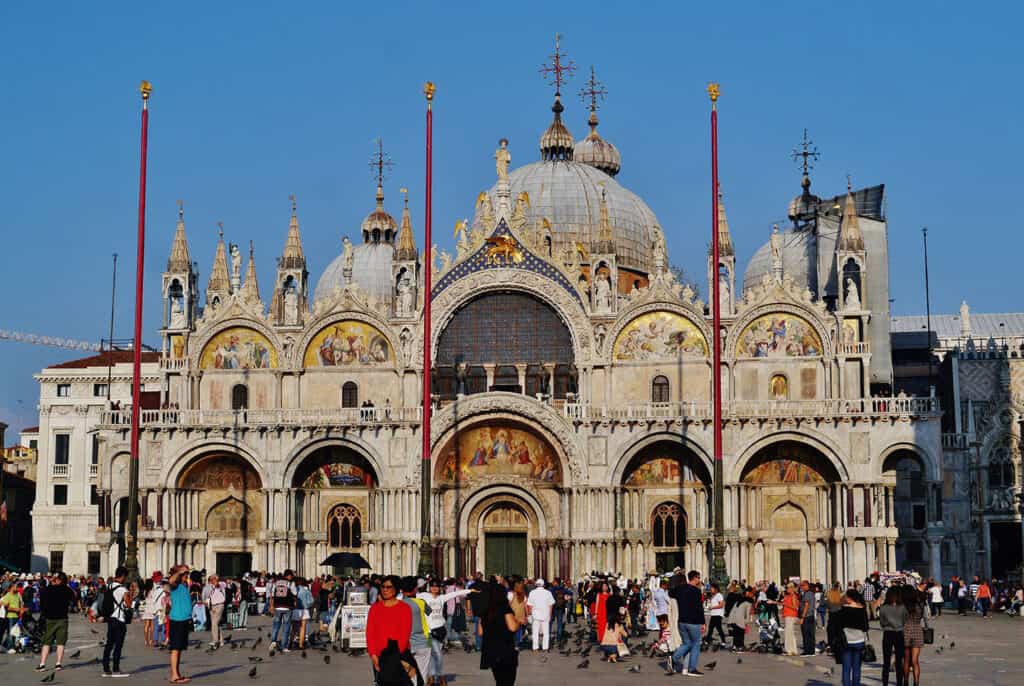
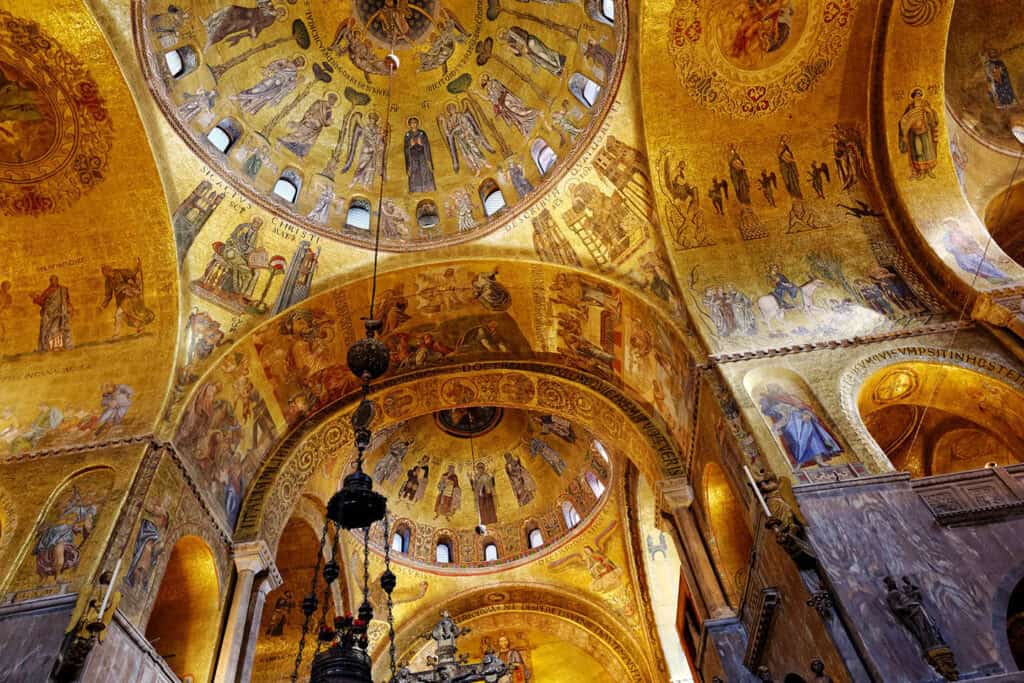
St. Mark’s Basilica is an ancient basilica that is famous for its stunning architecture and beautiful mosaics. The building is a testament to the skill of the Byzantine architects who built it, and it features a number of biblical scenes depicted in the mosaics. The building is also impressive for its sheer size and the level of detail that has been put into every aspect of its design.
5. Ravenna’s Churches and Mosaics
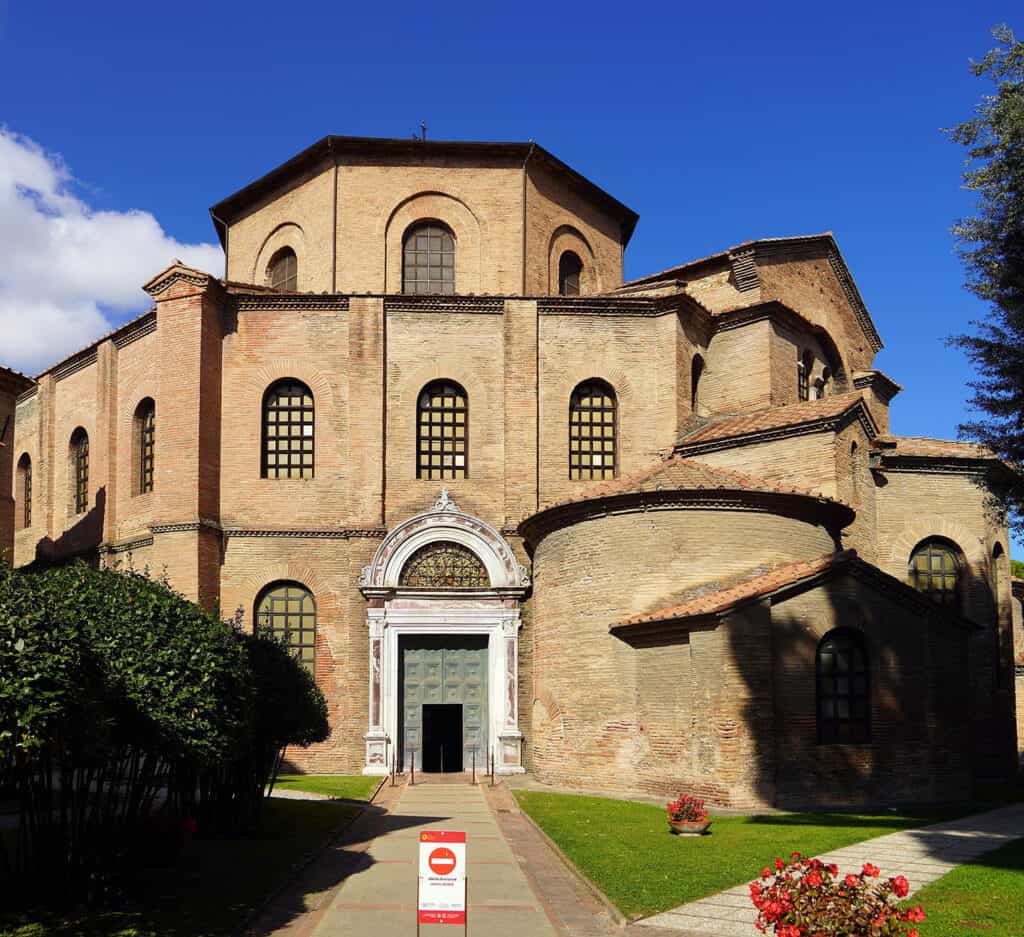

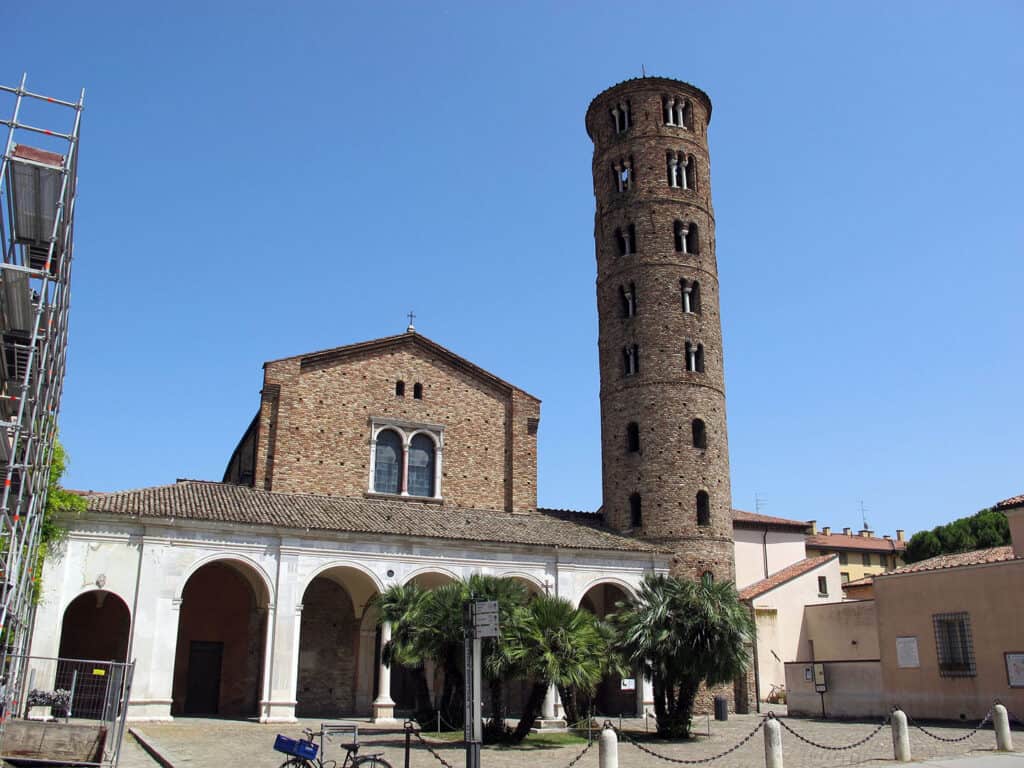
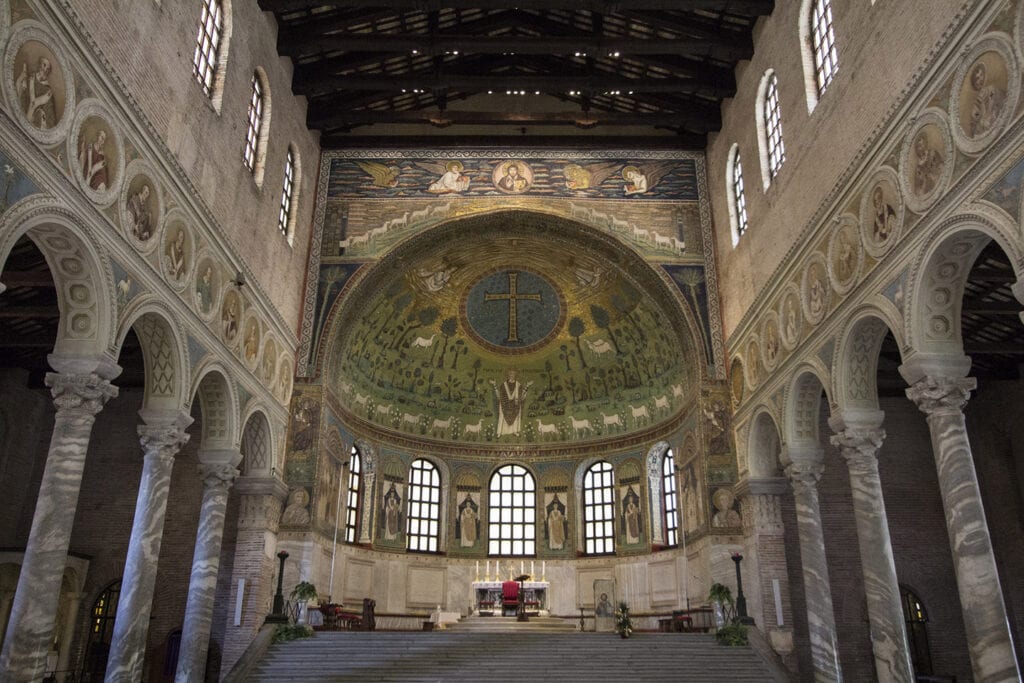
Ravenna is another Italian city that is famous for its Byzantine architecture and stunning mosaics. The city is home to a number of ancient basilicas and churches that are renowned for their beauty and historical significance. The mosaics in these buildings are particularly impressive, and they depict a range of biblical scenes and other religious imagery.
Romanesque Architecture
Romanesque architecture is a style that was prominent in Italy during the medieval period. It is characterized by rounded arches, barrel vaults, and thick walls. Two of the most famous examples of Romanesque architecture in Italy are the Pisa Cathedral and Leaning Tower, and the Basilica of Saint Ambrose in Milan.
6. Pisa Cathedral and Leaning Tower
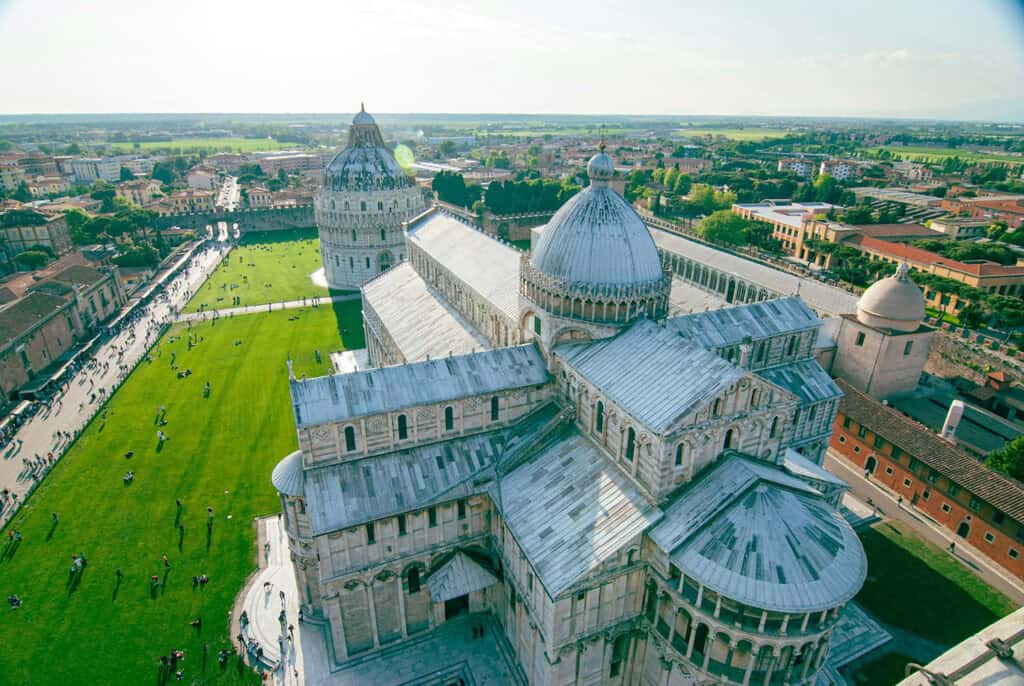
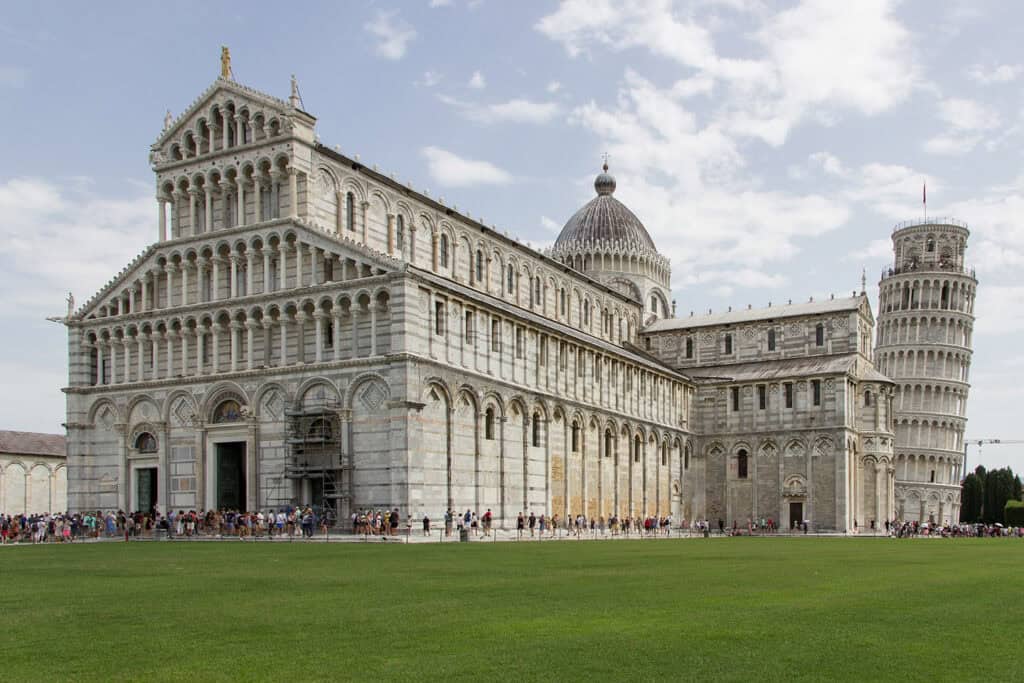
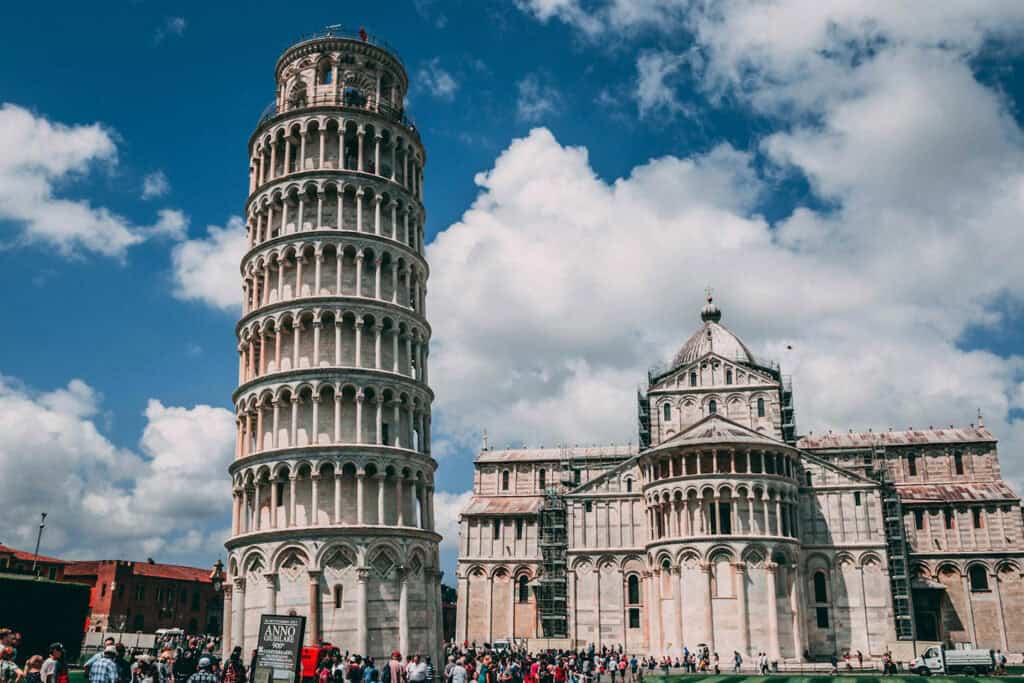
The Pisa Cathedral, located in the historic center of Pisa, is a medieval Roman Catholic cathedral that showcases the Pisan Romanesque architectural style. The interior features a stone vaulted roof, which was a technological achievement over the flat wooden ceilings found in many other Romanesque buildings.
The Leaning Tower of Pisa, located adjacent to the cathedral, is a major tourist attraction due to its famous lean. The tower was originally intended to be a bell tower for the cathedral but began leaning during its construction due to unstable soil.
7. Basilica of Saint Ambrose, Milan
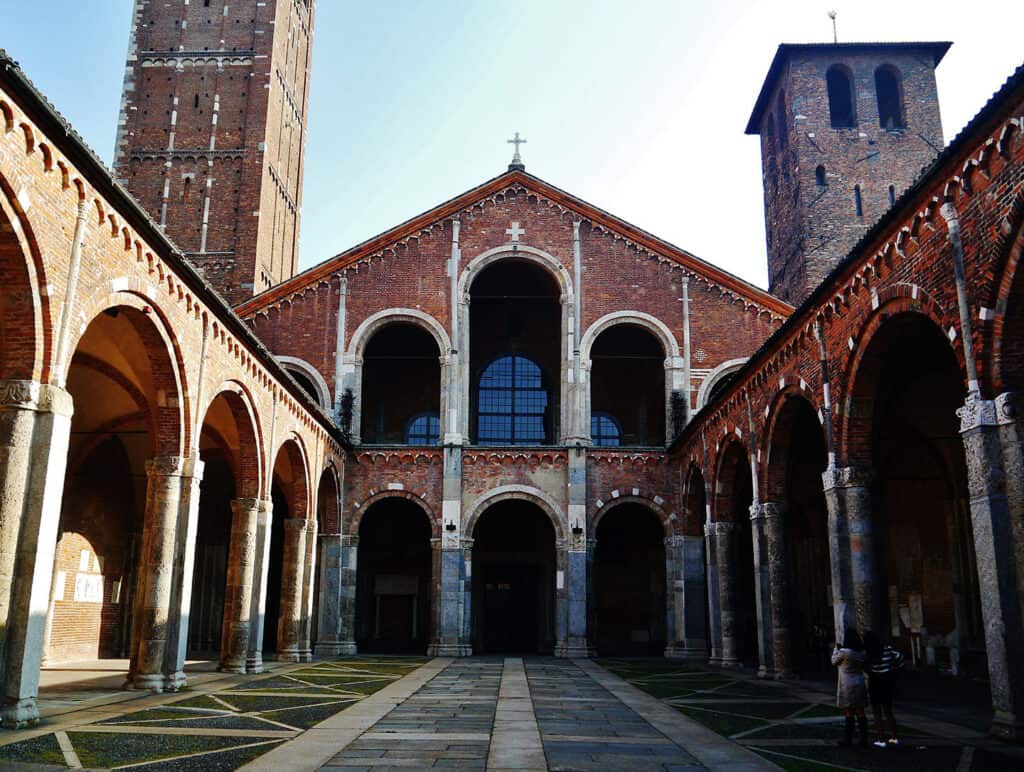
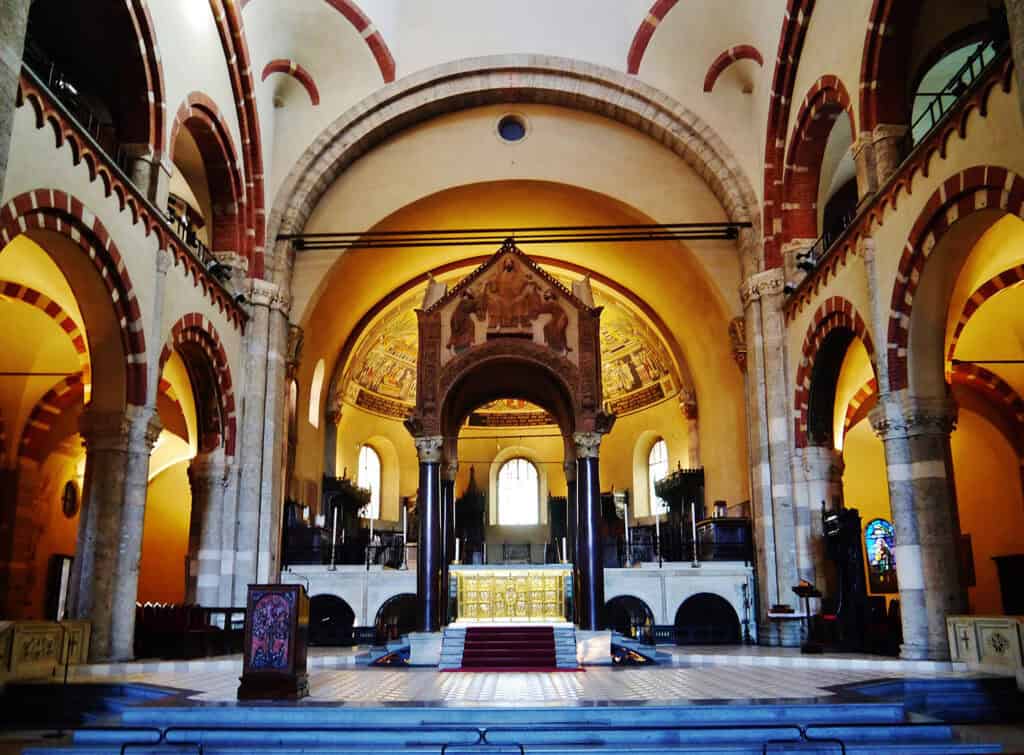
The Basilica of Saint Ambrose, located in Milan, is an ancient basilica that was built in the Romanesque style. It is one of the most important Christian churches in Italy and is dedicated to Saint Ambrose, the patron saint of Milan. The basilica features a Latin cross plan, barrel vaults, and a nave with two aisles. The exterior of the basilica is characterized by its simple and austere appearance, which reflects the Romanesque architectural style.
Gothic Architecture
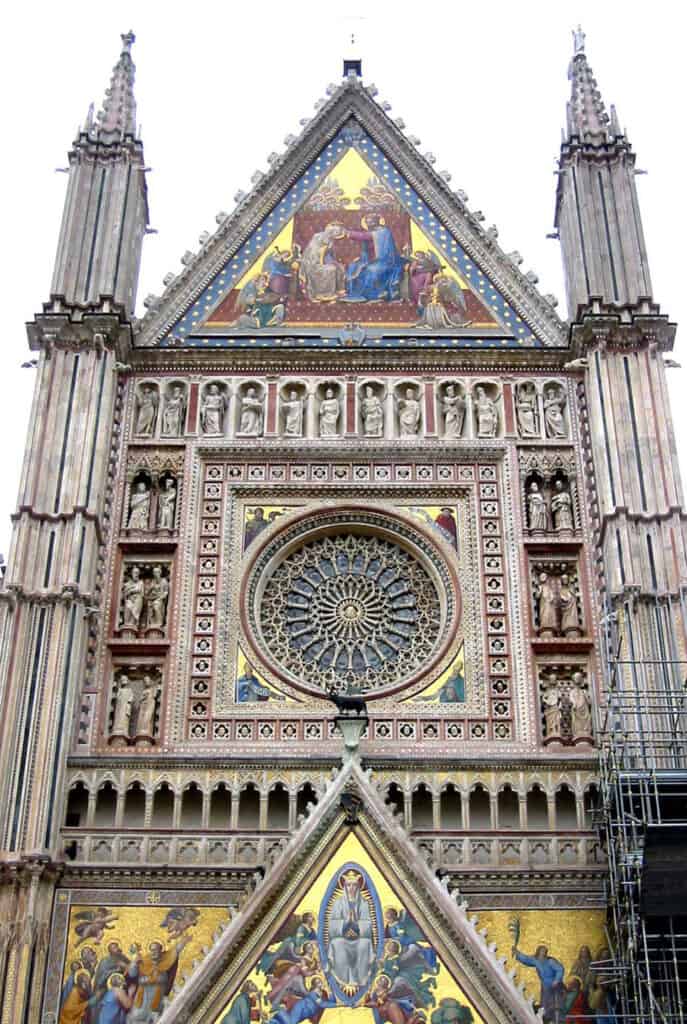
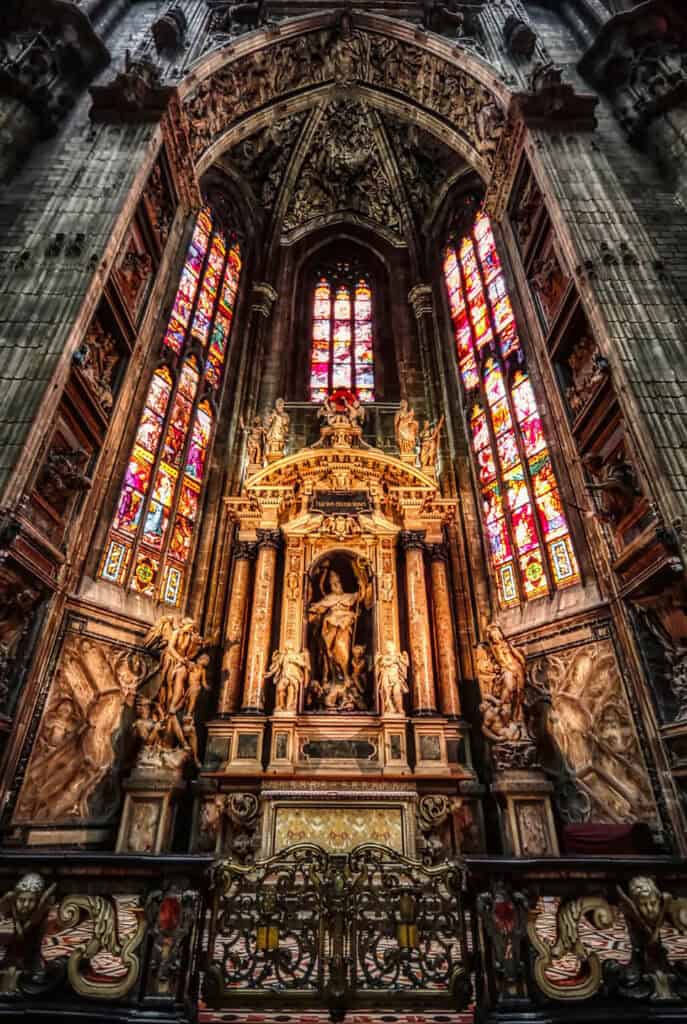
Gothic architecture is a style that emerged in Europe in the 12th century and continued until the 16th century. This style is characterized by its pointed arches, ribbed vaults, and flying buttresses. Italian Gothic architecture was first introduced in the 12th century by the Cistercian and Franciscan Orders. The Gothic style was then adopted by Italian architects and was used in the construction of many famous buildings.
8. Milan Cathedral (Duomo di Milano)
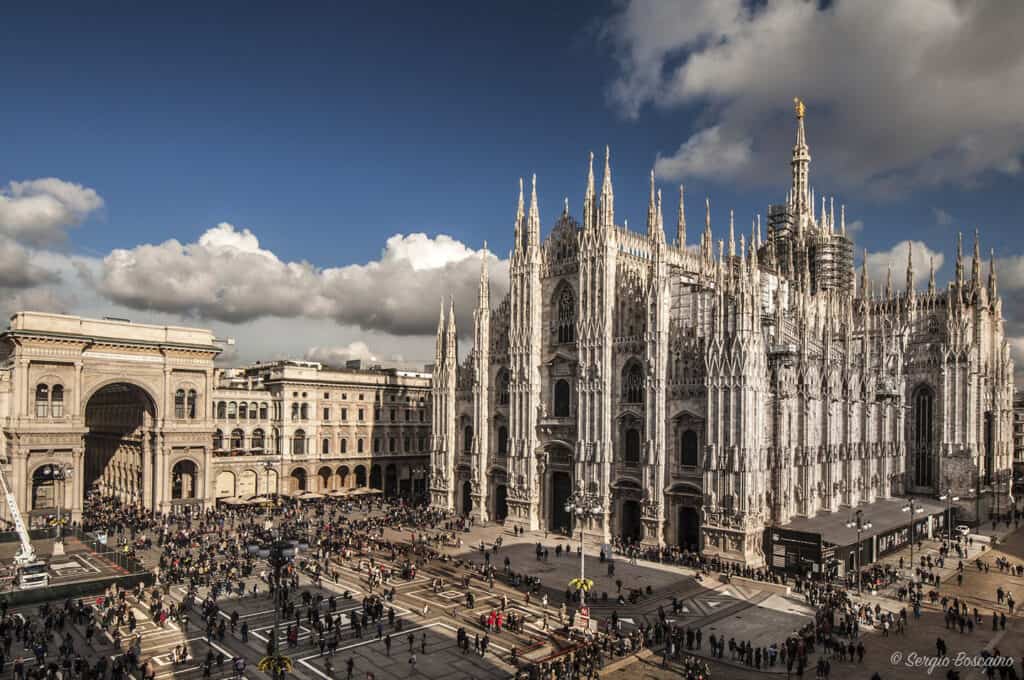
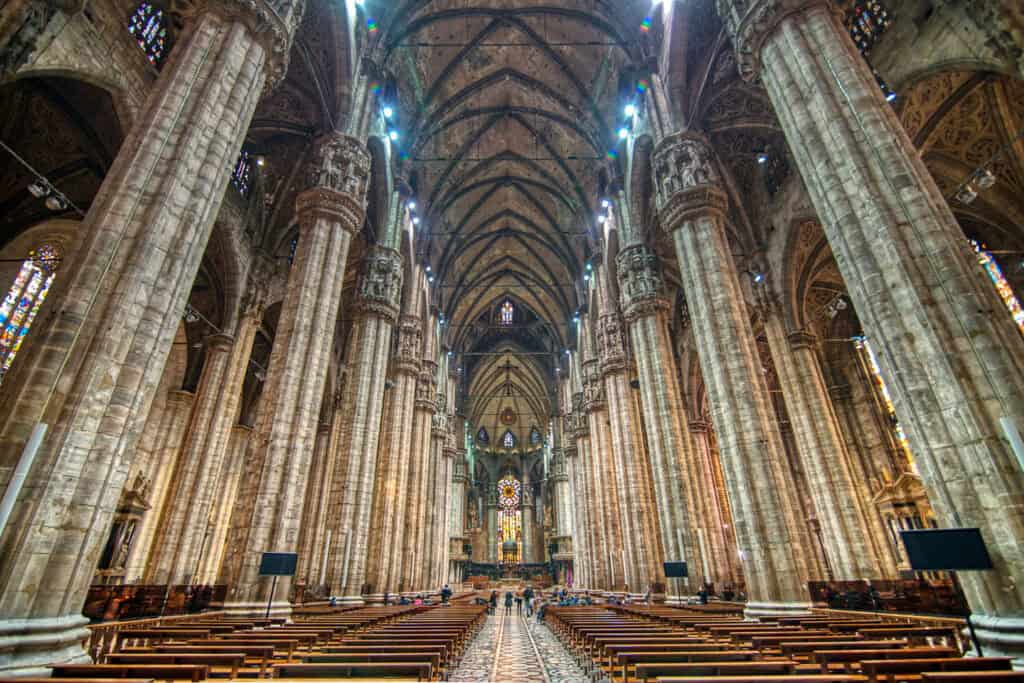
Milan Cathedral, also known as the Duomo di Milano, is one of the most famous buildings in Italy. This impressive sight is the largest church in Italy and the fifth-largest in the world. The cathedral’s most notable features are its two bell towers and the intricate sculptures that adorn its façade. The interior of the cathedral is equally impressive, with its Gothic style and stunning stained glass windows.
9. Orvieto Cathedral
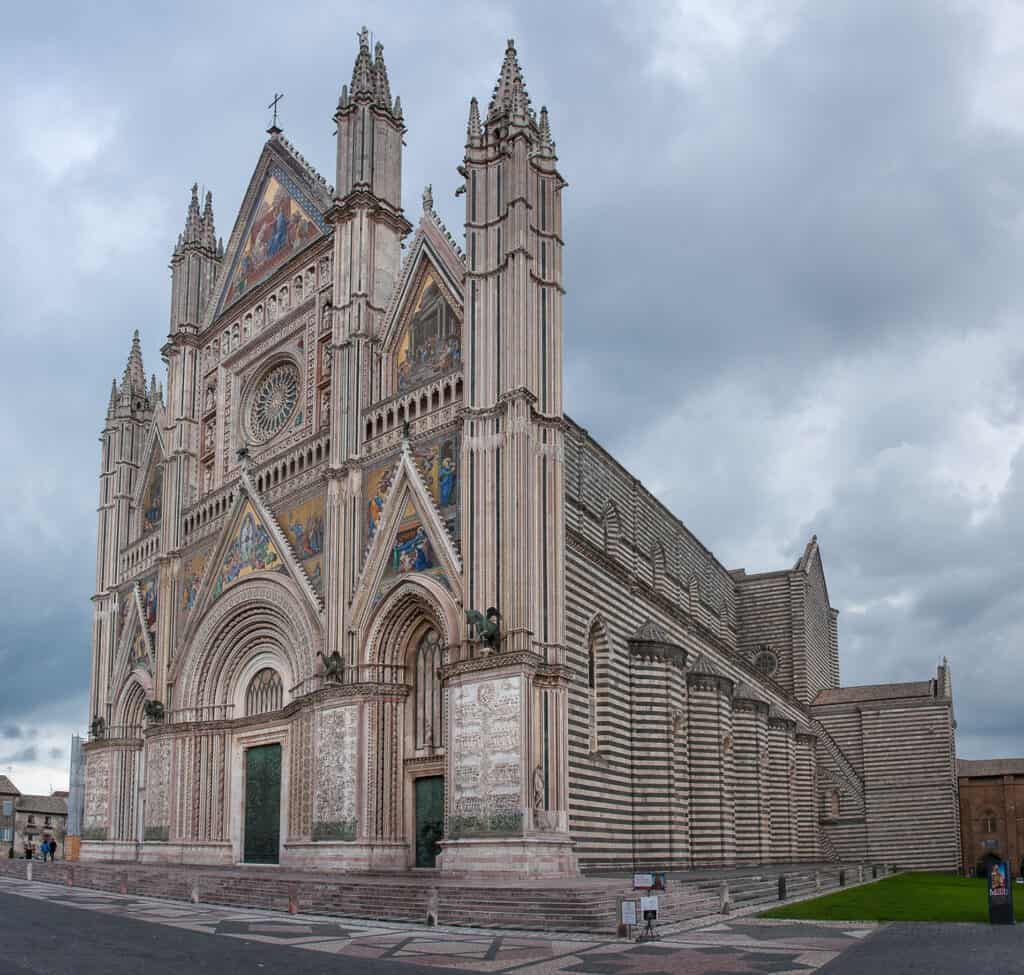

Orvieto Cathedral is a beautiful example of Italian Gothic architecture. This cathedral was built in the 14th century and is known for its intricate sculptures and stunning façade. The cathedral’s most notable feature is its ornate façade with intricate sculptures and detailed mosaics. The cathedral’s interior is impressive, with notable frescoes such as the “Last Judgment” by Luca Signorelli and stunning stained glass windows.
See Also Exploring Renaissance Churches
Renaissance Architecture
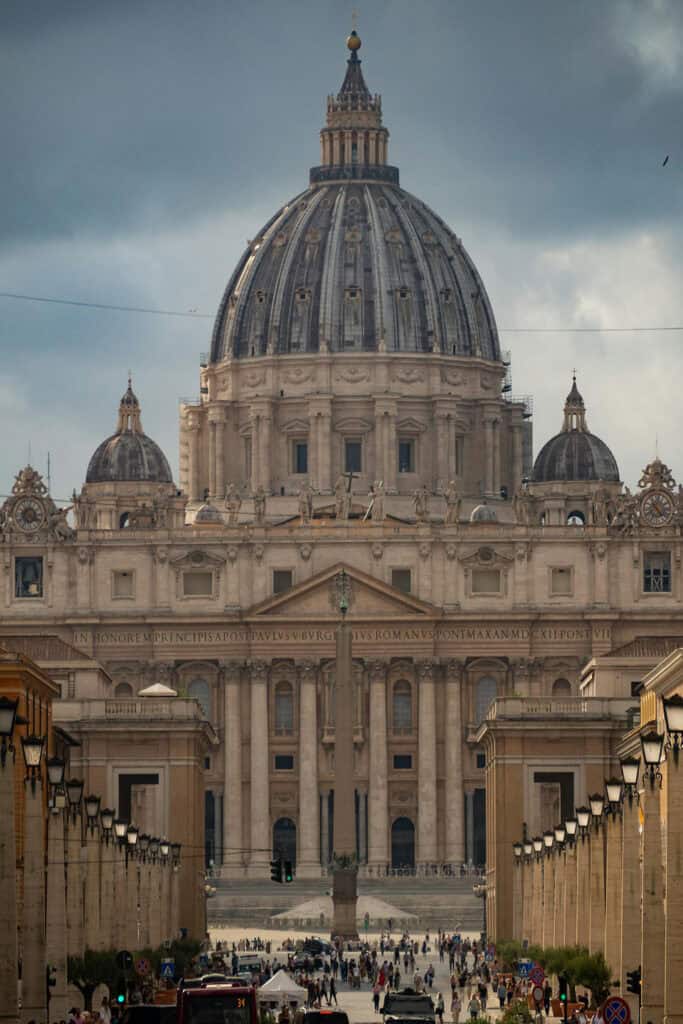
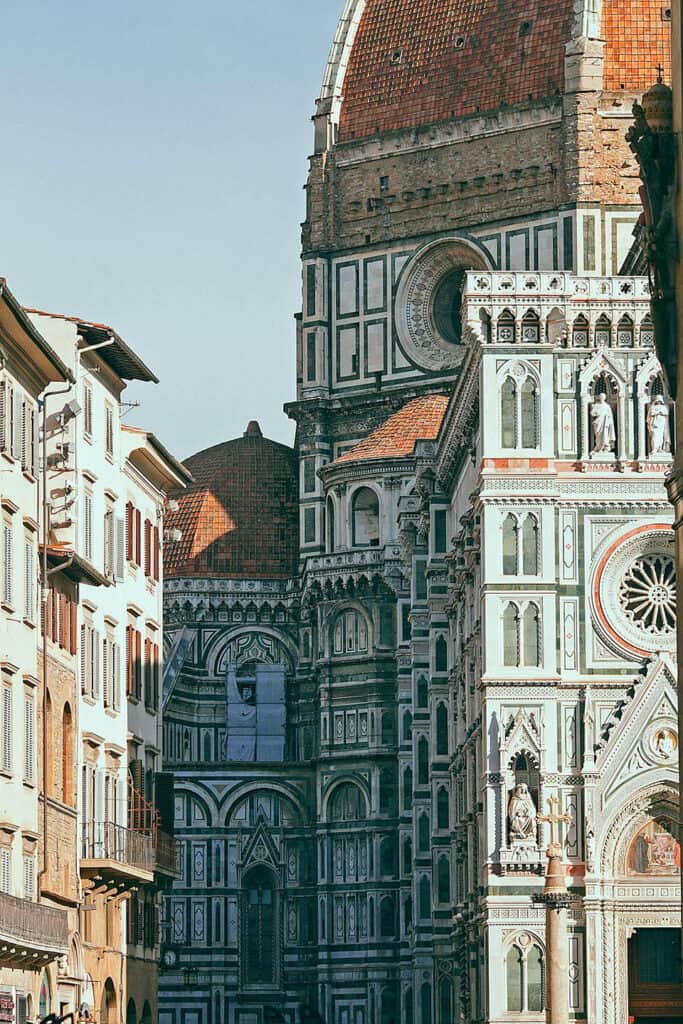
Renaissance architecture in Italy was characterized by a return to classical principles of architecture and a renewed interest in the aesthetics of ancient Rome. This period saw the creation of some of the most famous buildings and landmarks in Italy, including the Florence Cathedral, Palazzo Pitti, and St. Peter’s Basilica.
10. Florence Cathedral (Duomo di Firenze)
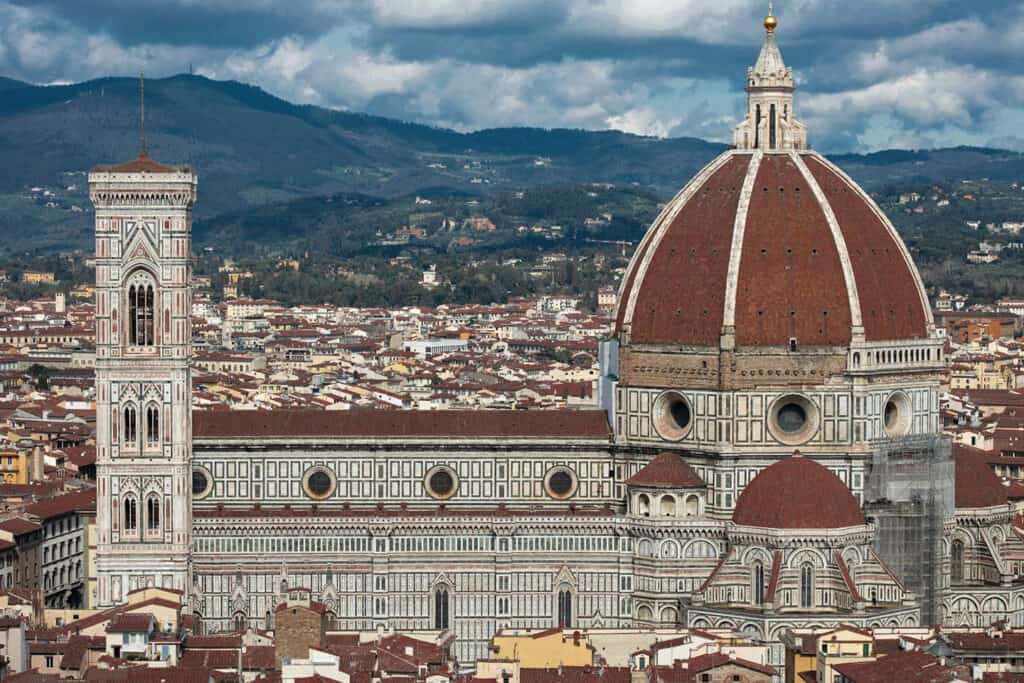

The Florence Cathedral, also known as Santa Maria del Fiore, is one of the most remarkable architectural marvels of the Renaissance period. It is located in the Piazza del Duomo and is the largest brick dome ever constructed. The cathedral combines Gothic and Renaissance elements to create a stunning and unique architectural style.
11. Palazzo Pitti, Florence
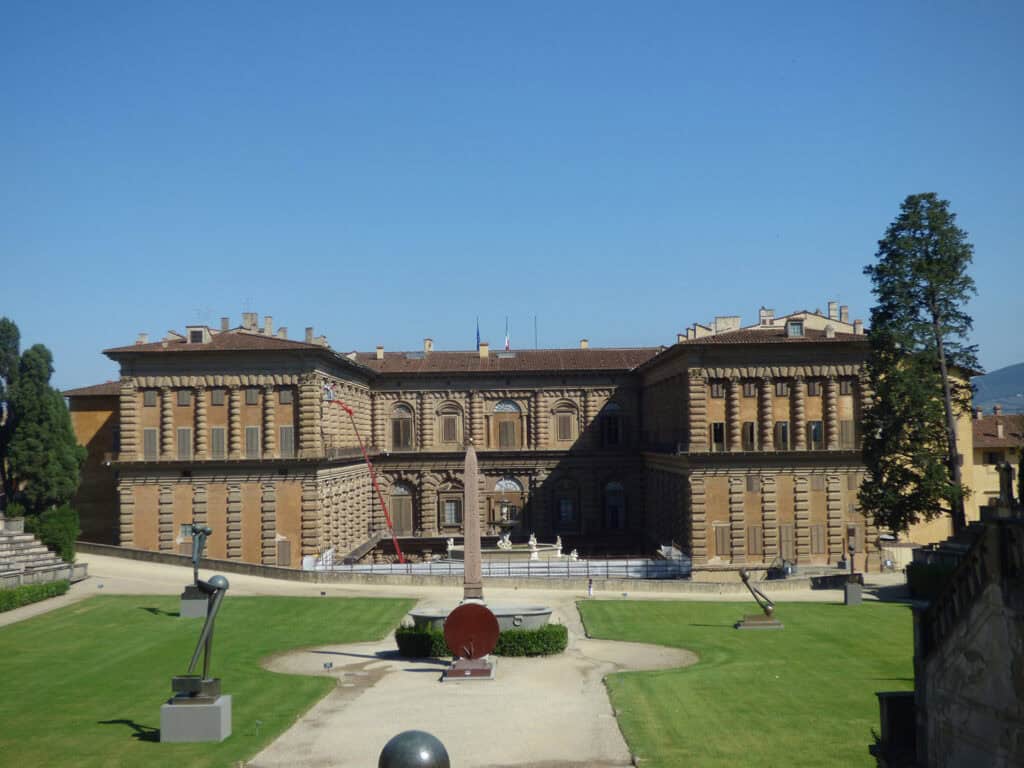
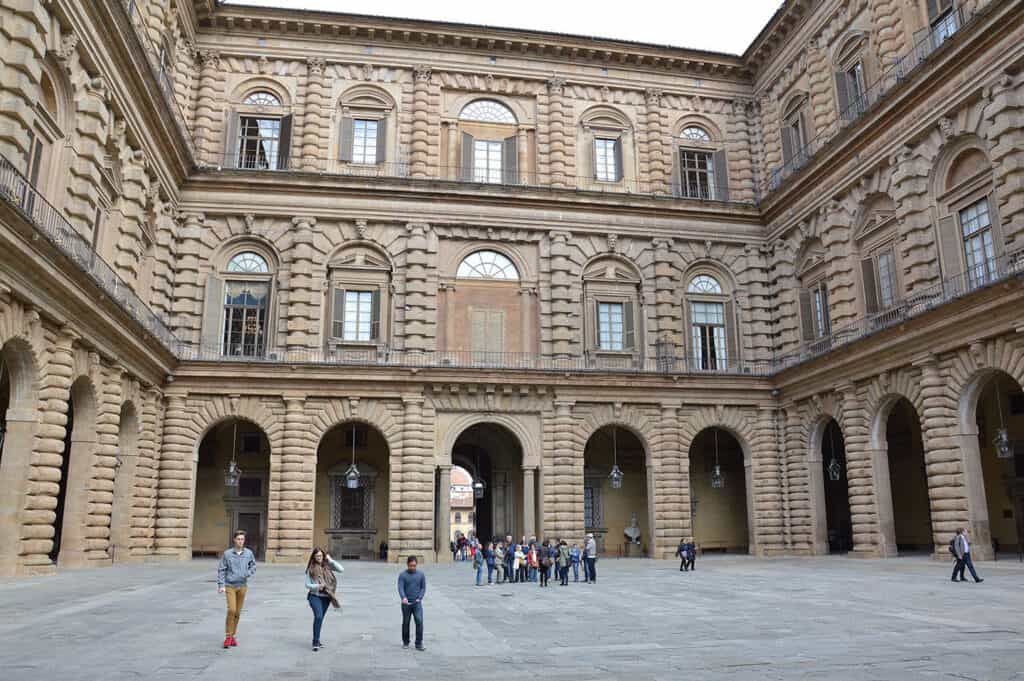
The Palazzo Pitti is a Renaissance palace located in Florence. It was built for the Pitti family in the 15th century and later became the residence of the Medici family. The palace is a remarkable example of Renaissance architecture and is characterized by its stunning façade and grand interior.
12. St. Peter’s Basilica, Vatican City

St. Peter’s Basilica is perhaps the most famous building of the Renaissance period. Located in Vatican City, it was designed by a group of architects including Alberti, Raphael, Bramante, Michelangelo, and Bernini. The basilica is a prominent landmark and is renowned for its architectural grandeur and sheer mass.
See Also 44 Facts About Most Associated Cities in High Renaissance in Italy
Baroque Architecture
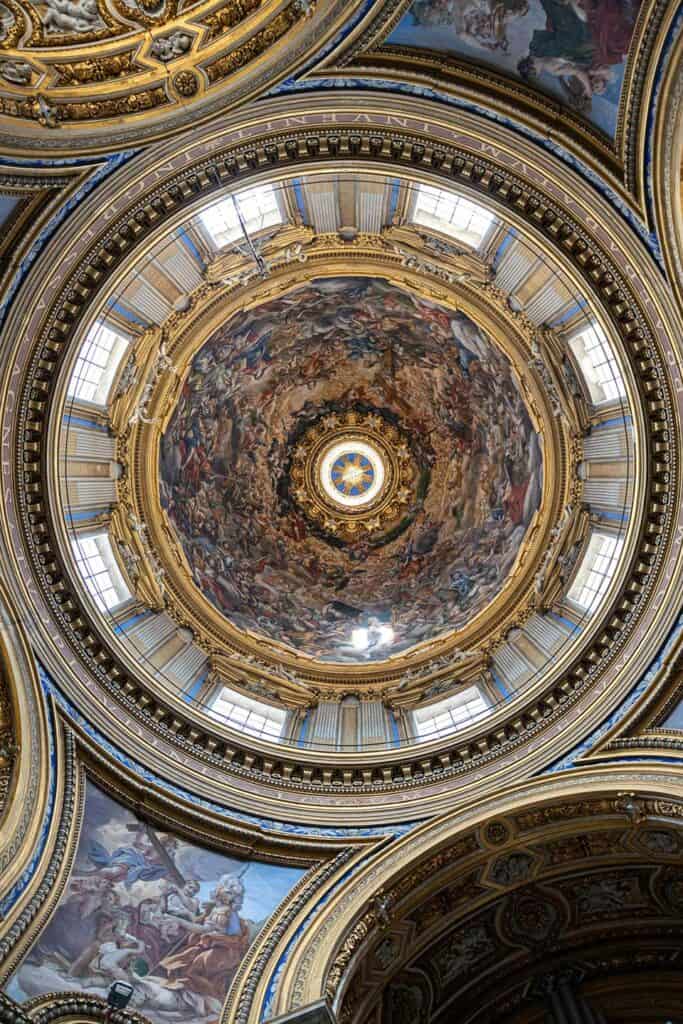
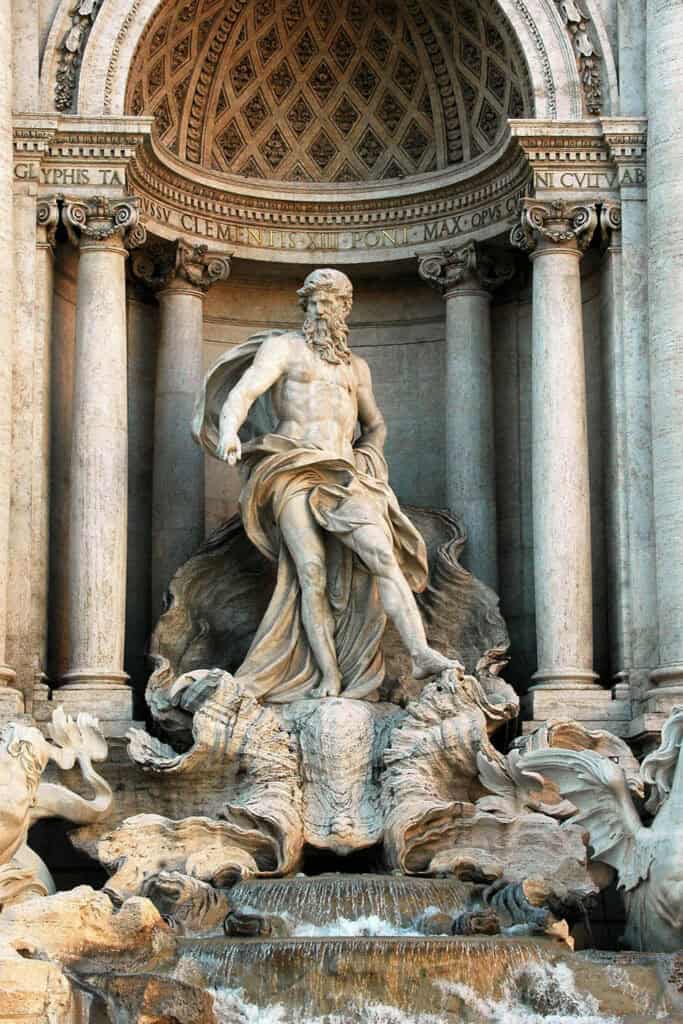
Baroque architecture is a remarkable style of Italian architecture that emerged in the early 17th century. It is characterized by ornate details, curved shapes, large-scale decoration, and dramatic effects of light and shadow. Baroque architecture has shaped Italy’s cultural identity and is still a major tourist attraction today. Here are some of the most famous landmarks in Italy that showcase Baroque architecture:
13. Trevi Fountain, Rome
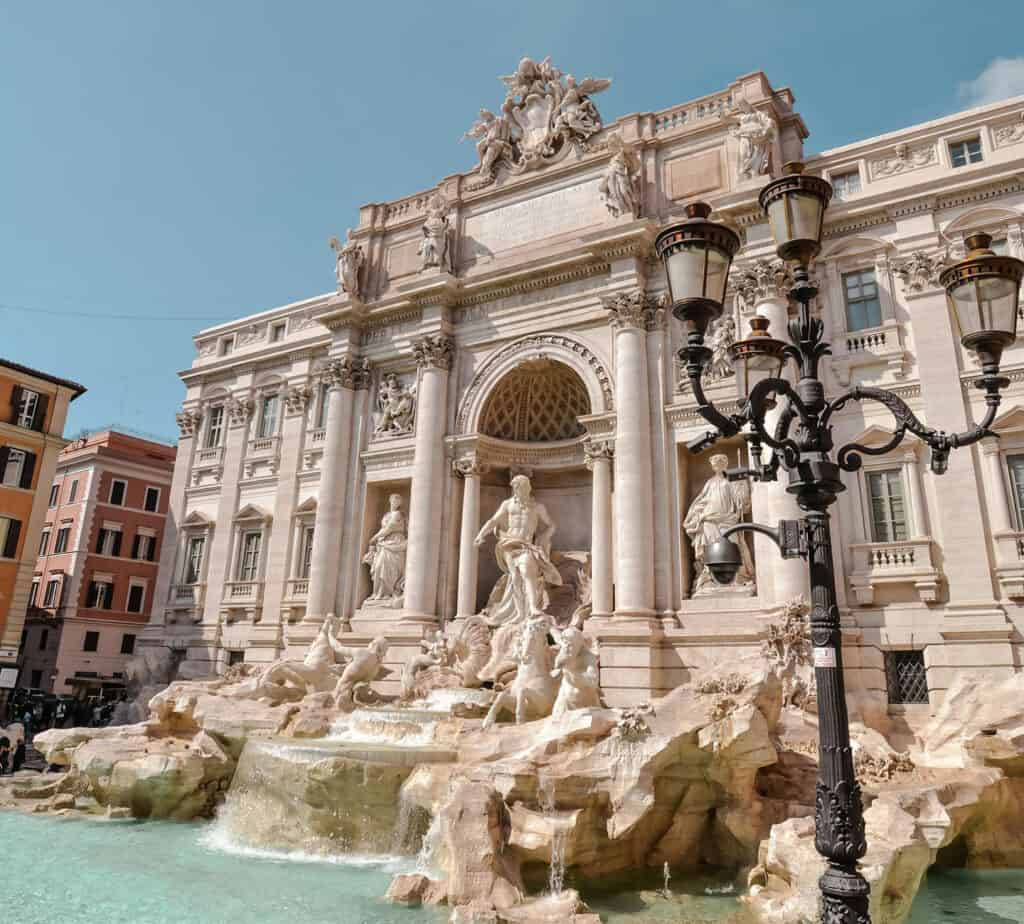
The Trevi Fountain is one of the most famous monuments in Rome and a major tourist attraction. It is a remarkable Baroque fountain that was designed by Nicola Salvi and completed by Giuseppe Pannini in the 18th century. The fountain is an impressive sight, featuring a grandiose sculpture of Neptune, the god of the sea, surrounded by tritons and sea horses. The Trevi Fountain is a must-see for anyone visiting Rome.
14. Palazzo Barberini, Rome


The Palazzo Barberini is a Baroque palace located in the historical center of Rome. It was designed by Carlo Maderno and Francesco Borromini in the 17th century for the Barberini family. The palace is an architectural marvel, featuring a grandiose façade with two symmetrical wings and a central portico with a large balcony. The Palazzo Barberini is now home to the National Gallery of Ancient Art and is open to the public.
15. Church of Sant’Agnese in Agone, Rome

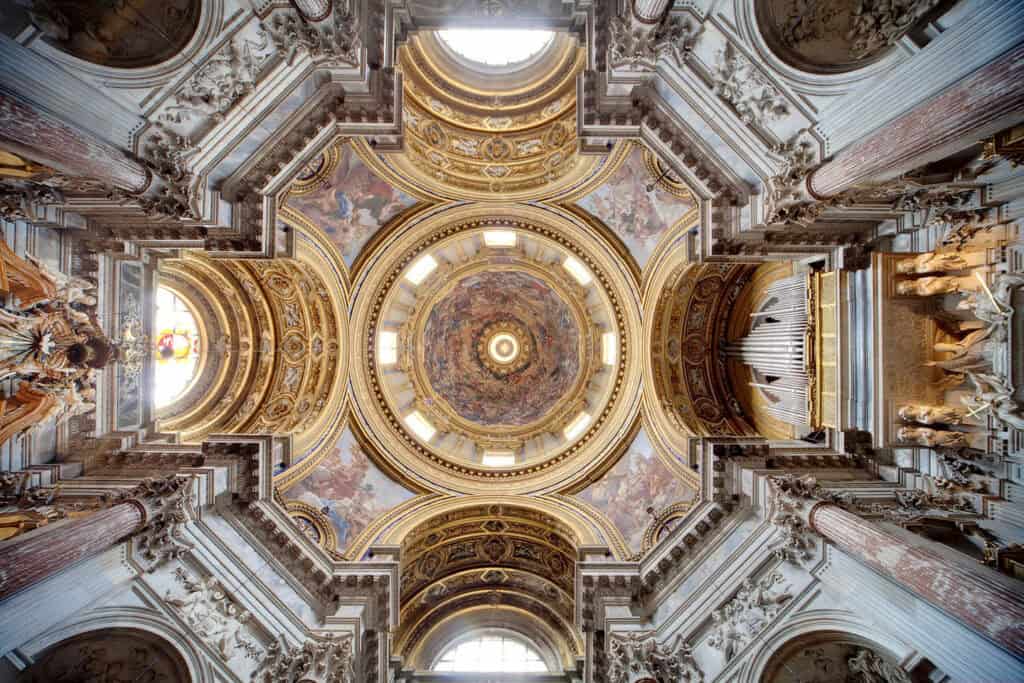
The Church of Sant’Agnese in Agone is a Baroque church located in Piazza Navona in Rome. Built in the 17th century, the church is an impressive sight, featuring a grandiose façade with two bell towers and a dome. The interior is equally remarkable, adorned with ornate decorations and sculptures. The Church of Sant’Agnese in Agone is a must-see for anyone interested in Italian Baroque architecture.
See Also Baroque Architecture in Italy
Neoclassical Architecture
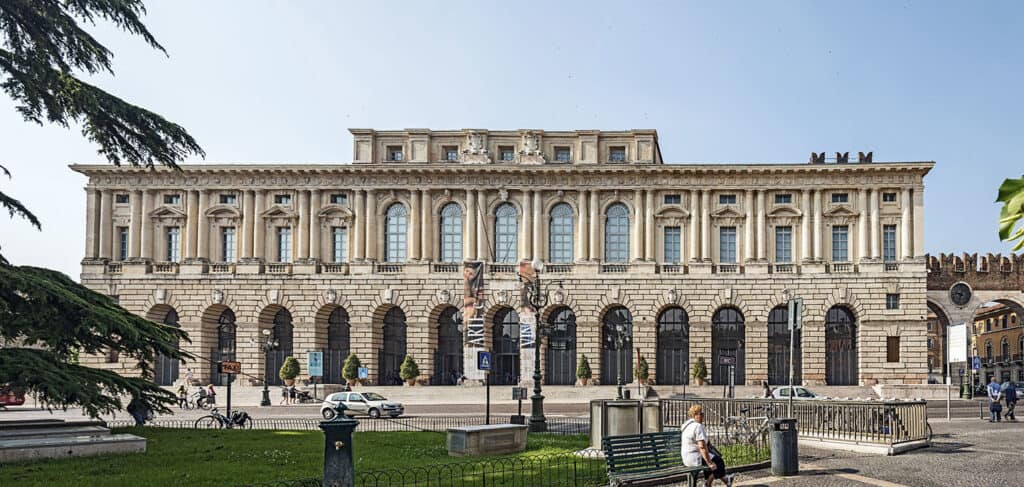
Neoclassical architecture is indeed an architectural style that emerged in the mid-18th century, but it originated in Italy, France, and England. It is characterized by a return to the classical architectural styles of ancient Greece and Rome, inspired by a desire to revive and emulate the principles of classical architecture. In Italy, neoclassical architecture arose from the broader European movement to return to classical ideals and has become a significant architectural style in the Western world.
16. Teatro Alla Scala, Milan
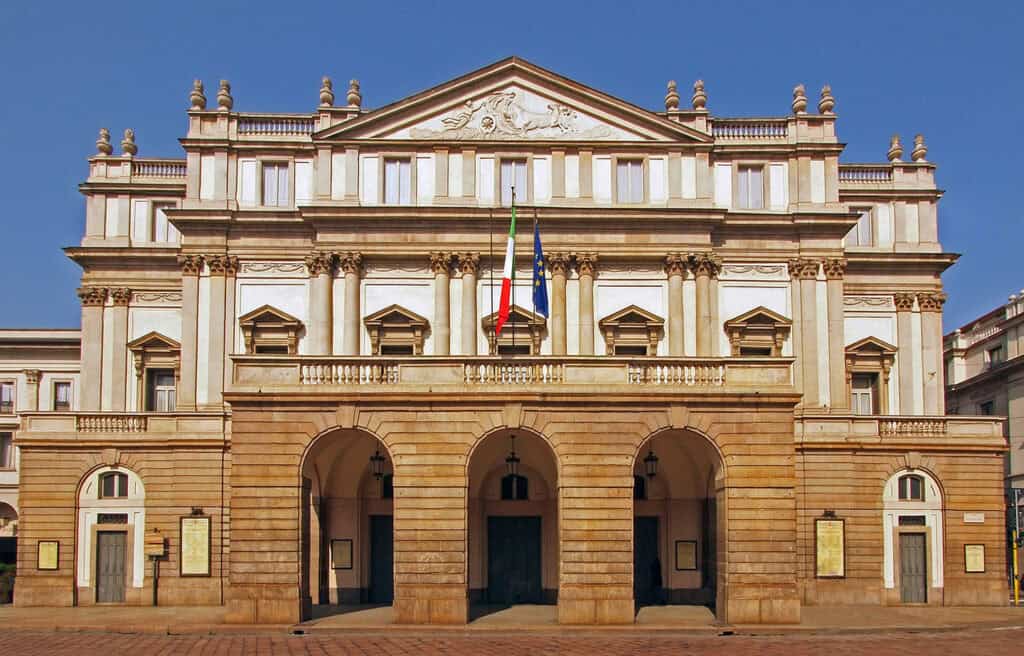
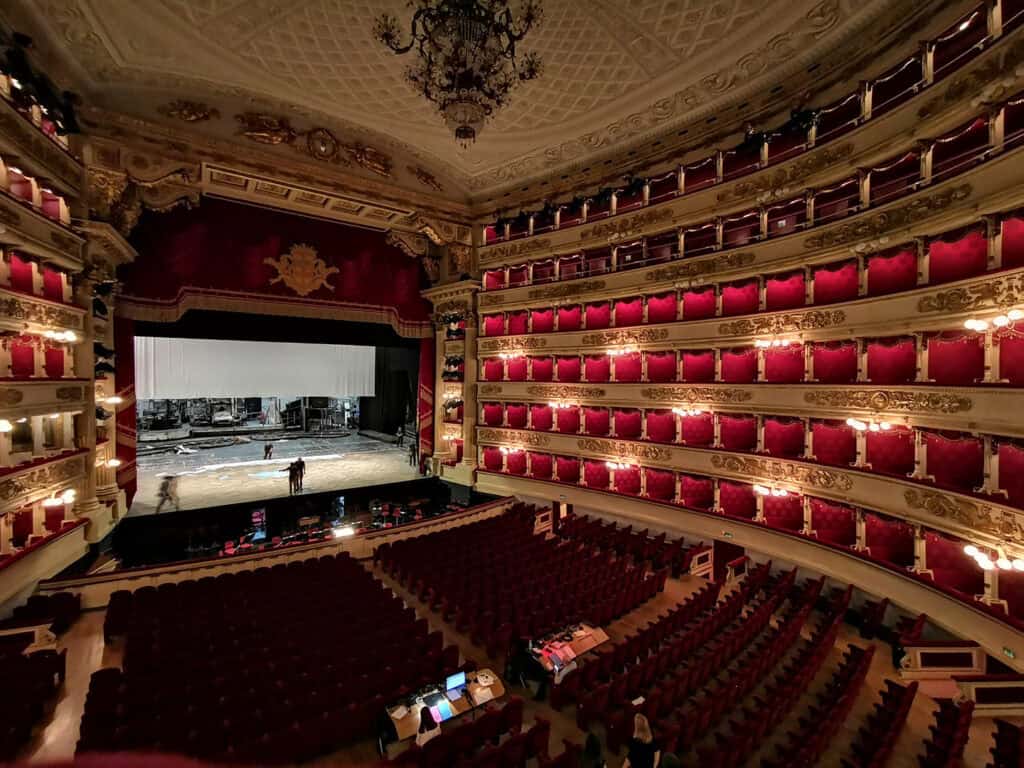
Teatro Alla Scala, also known as La Scala, is an opera house in Milan, Italy. It was built between 1776 and 1778 and is considered one of the most famous neoclassical buildings in the world. The façade of the building is adorned with Corinthian columns, while the interior features a horseshoe-shaped auditorium with five tiers of boxes. The theater has hosted some of the world’s most famous opera singers and conductors and is a prominent landmark of Milan.
17. Palazzo della Gran Guardia, Verona
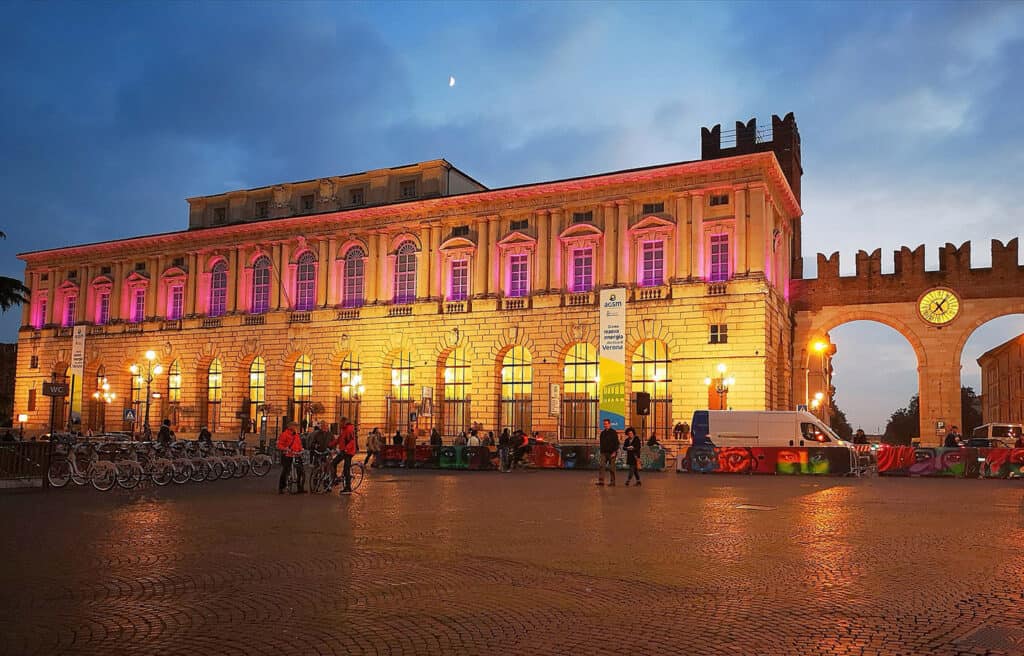
Palazzo della Gran Guardia is a neoclassical building located in the heart of Verona, Italy. It was built from 1609 to 1853 and served as a military barracks until the 1990s. The building features a large central hall with a glass roof and is often used for exhibitions, concerts, and other events. It is considered one of the most remarkable examples of neoclassical architecture in Verona and is a prominent landmark of the city.
See Also Famous Buildings in Milan
Modern and Contemporary Architecture
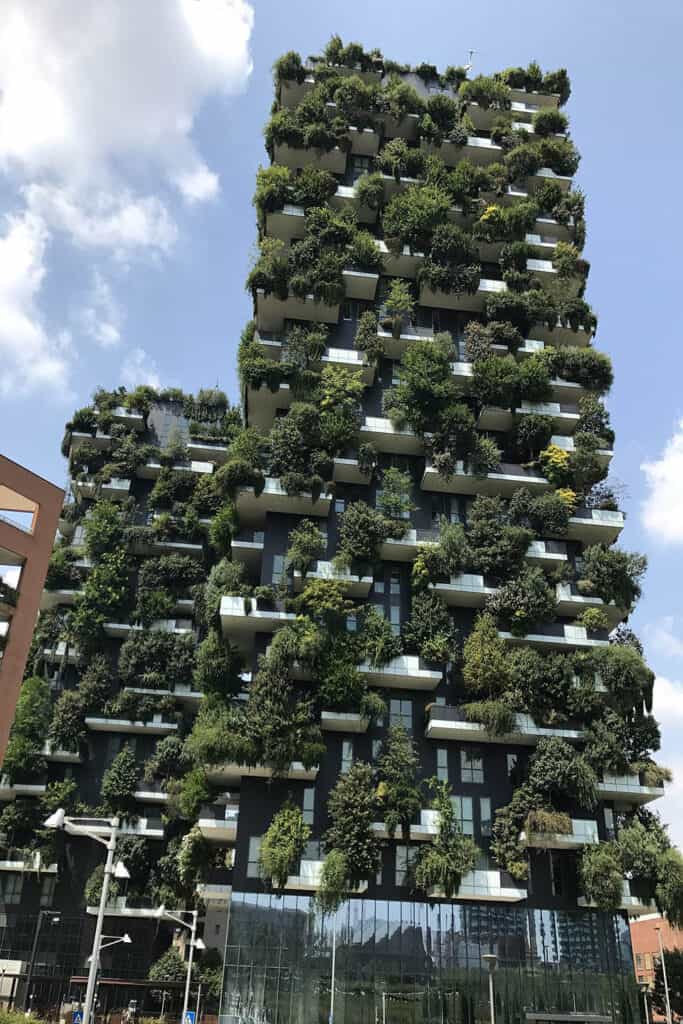
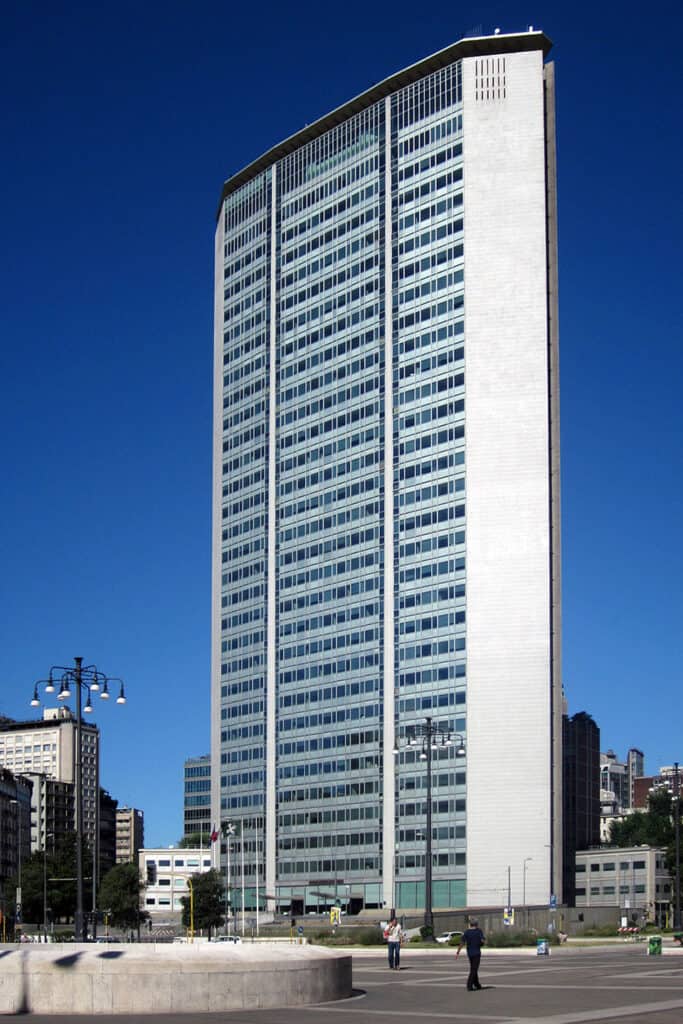
Italy is renowned for its modern and contemporary architecture, which showcases a blend of traditional and innovative styles. Here are three notable examples:
18. Pirelli Tower, Milan
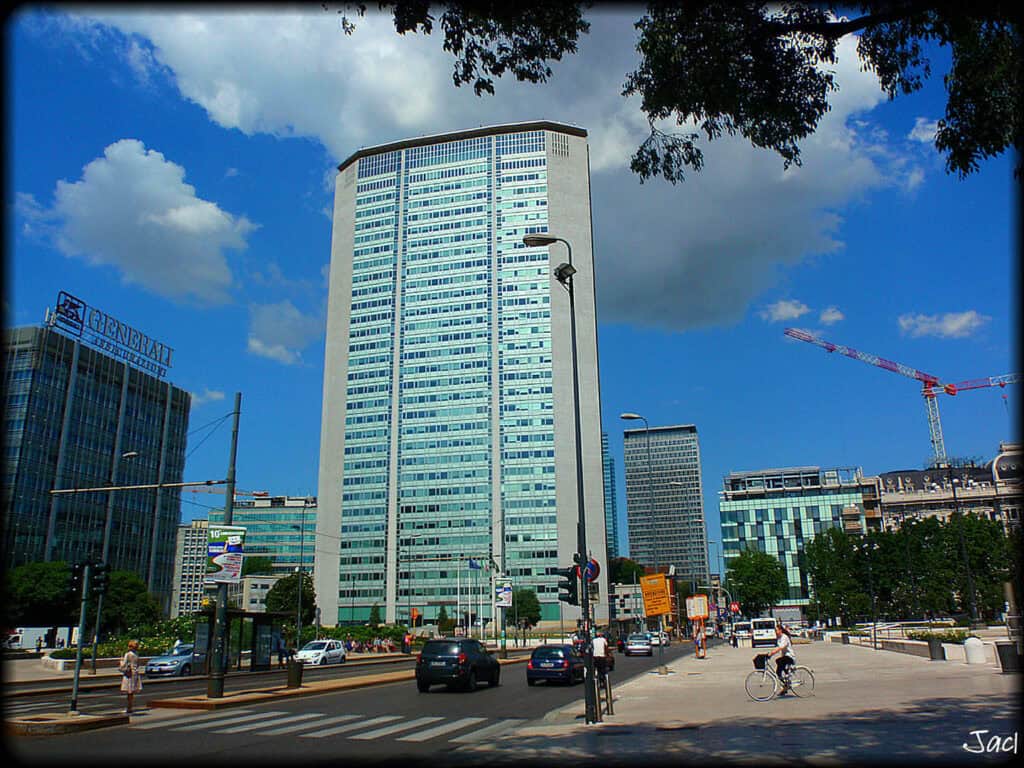
Located in the heart of Milan, the Pirelli Tower is a prominent landmark that embodies modernist architecture. Designed by Gio Ponti and Pier Luigi Nervi, the building features a distinctive cylindrical shape and a façade made of glass and steel. Completed in 1958, the Pirelli Tower was the tallest building in Italy at the time and is still considered an iconic symbol of Milan’s skyline.
19. MAXXI Museum, Rome
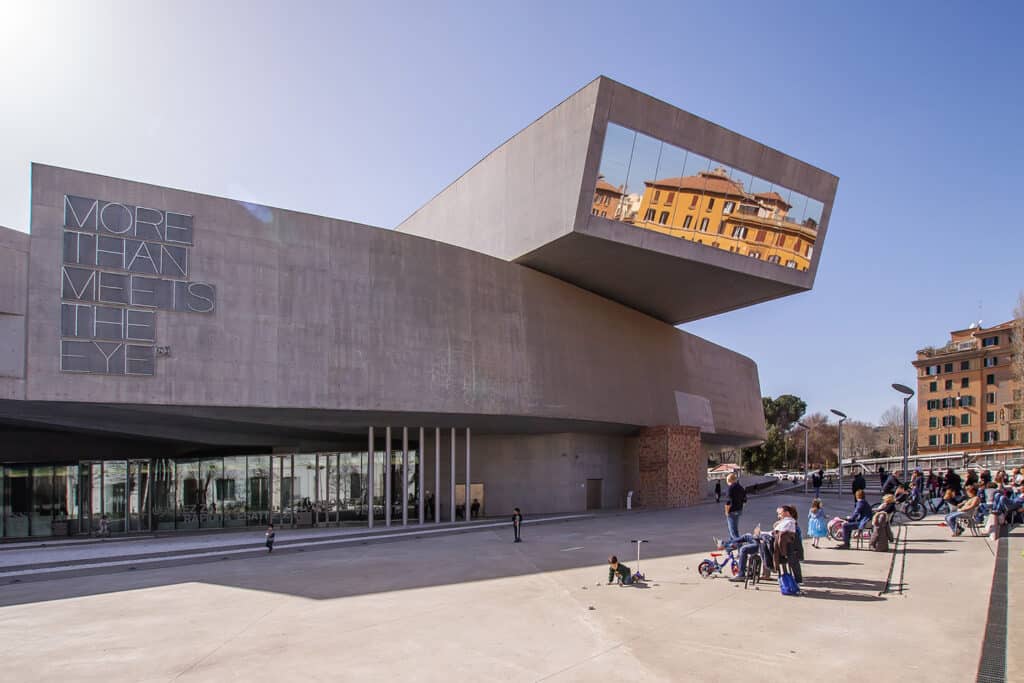
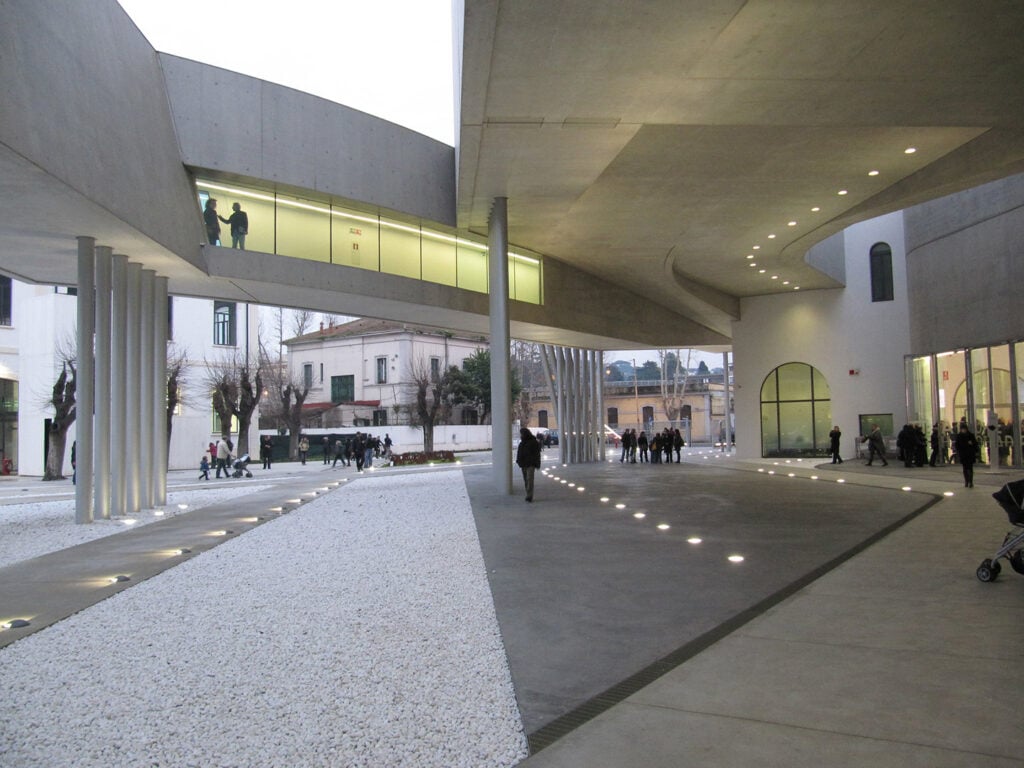
The MAXXI Museum in Rome is a striking example of contemporary art and architecture. Designed by Zaha Hadid, the building features a bold and fluid design that incorporates both indoor and outdoor spaces. Completed in 2009, the MAXXI Museum is one of the most prominent cultural institutions in Italy and has won numerous awards for its innovative design.
20. Vertical Forest (Bosco Verticale), Milan
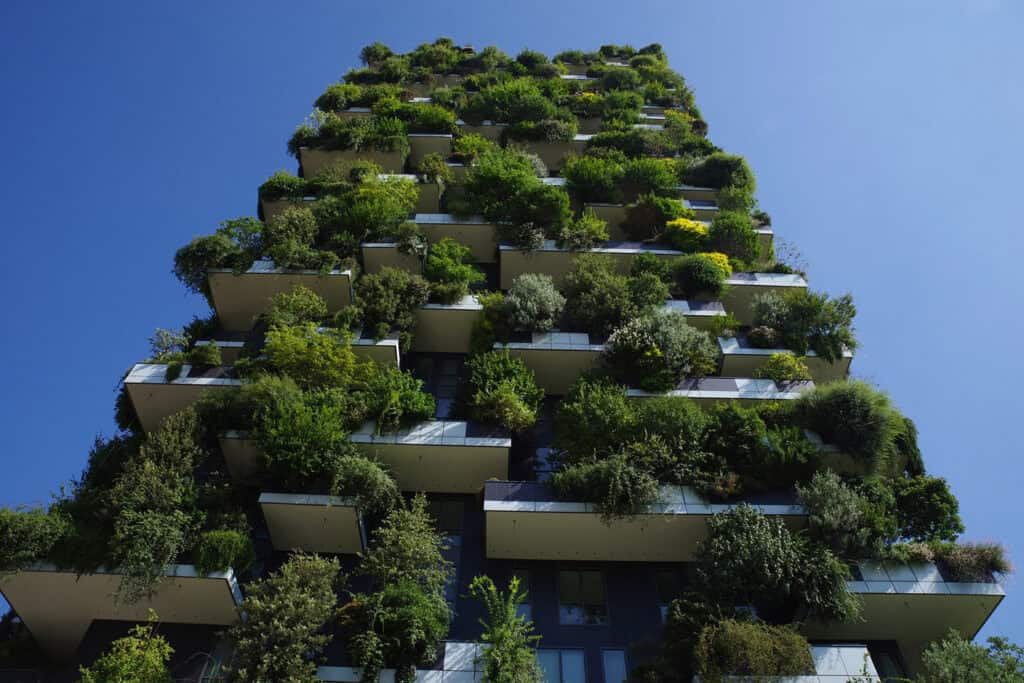
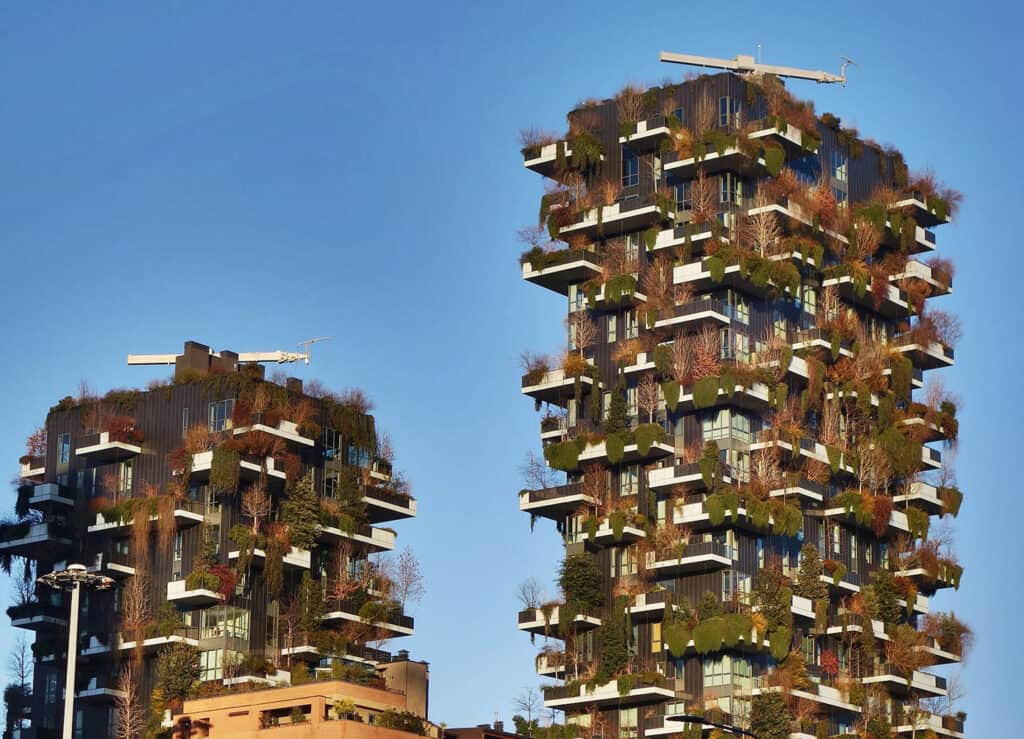
The Vertical Forest, also known as the Bosco Verticale, is a unique residential complex in Milan that showcases sustainable and innovative design. Designed by Boeri Studio, the building features two towers that are covered in over 20,000 plants, which help to improve air quality and reduce noise pollution. Completed in 2014, the Vertical Forest has won numerous awards for its innovative and eco-friendly design.
See Also Italian Modern Architecture
Regional Architectural Styles
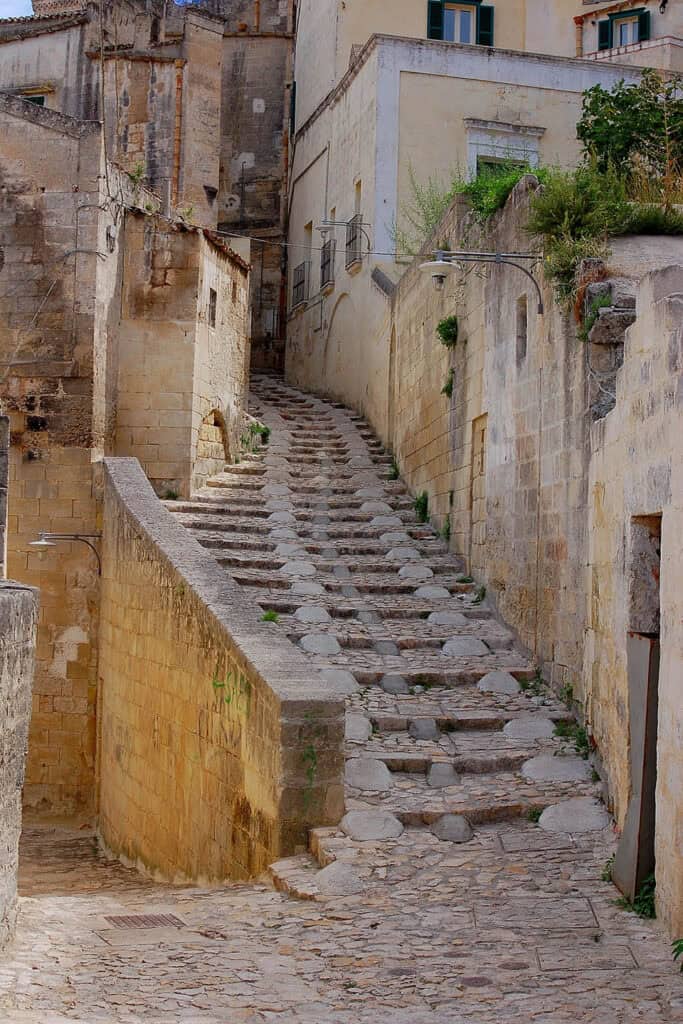
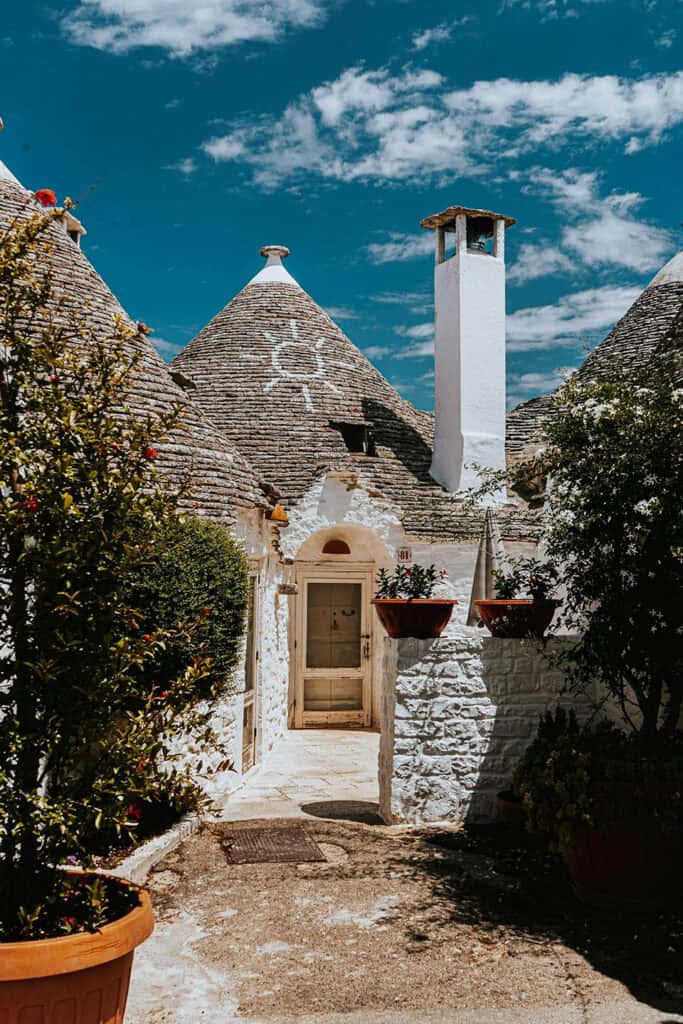
Italy is known for its diverse and eclectic architectural styles, which vary greatly from region to region. Southern Italy, in particular, boasts a rich architectural heritage that reflects its unique history and culture. Some of the most famous buildings in Italy are located in the south, and many of them feature unique structures and building materials that are not found elsewhere in the country.
21. Trulli of Alberobello, Puglia
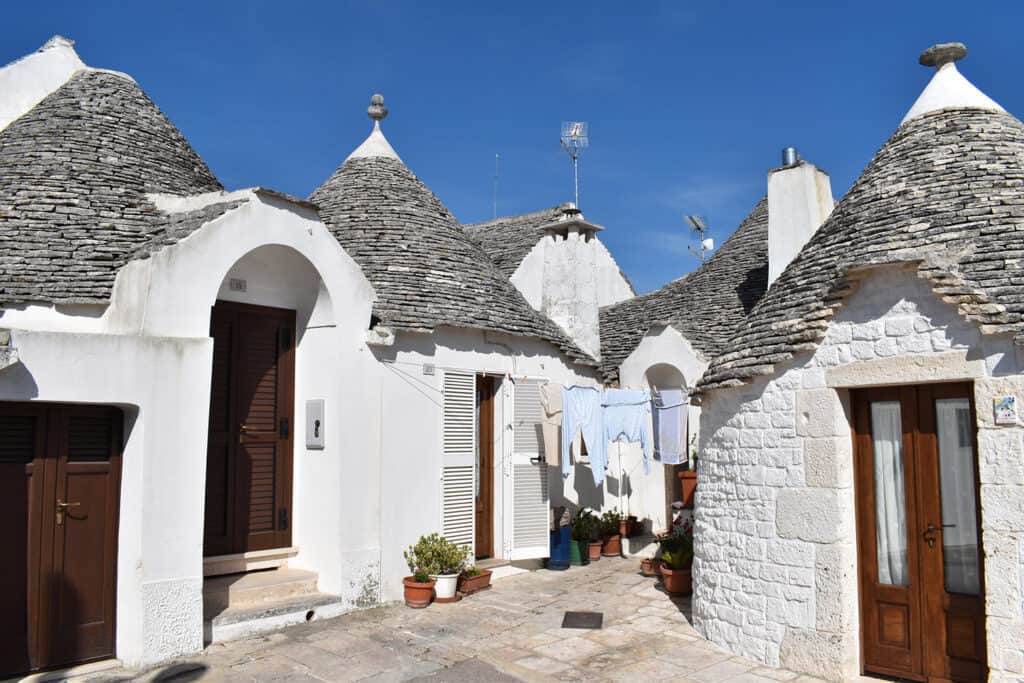
The Trulli of Alberobello is a series of unique, cone-shaped buildings that are found in the town of Alberobello in the region of Puglia. These buildings are made of local limestone and feature conical roofs that are constructed without the use of mortar.
They were originally built as temporary shelters for agricultural workers, but many of them have been converted into permanent homes and businesses. Today, the Trulli of Alberobello is a popular tourist attraction and has been recognized as a UNESCO World Heritage Site.
22. Sassi di Matera, Basilicata
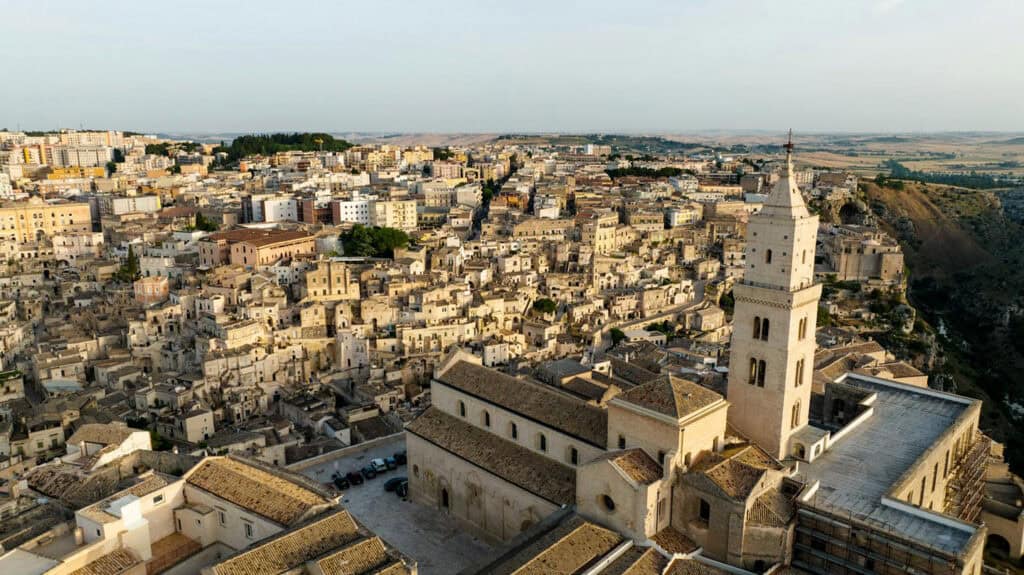
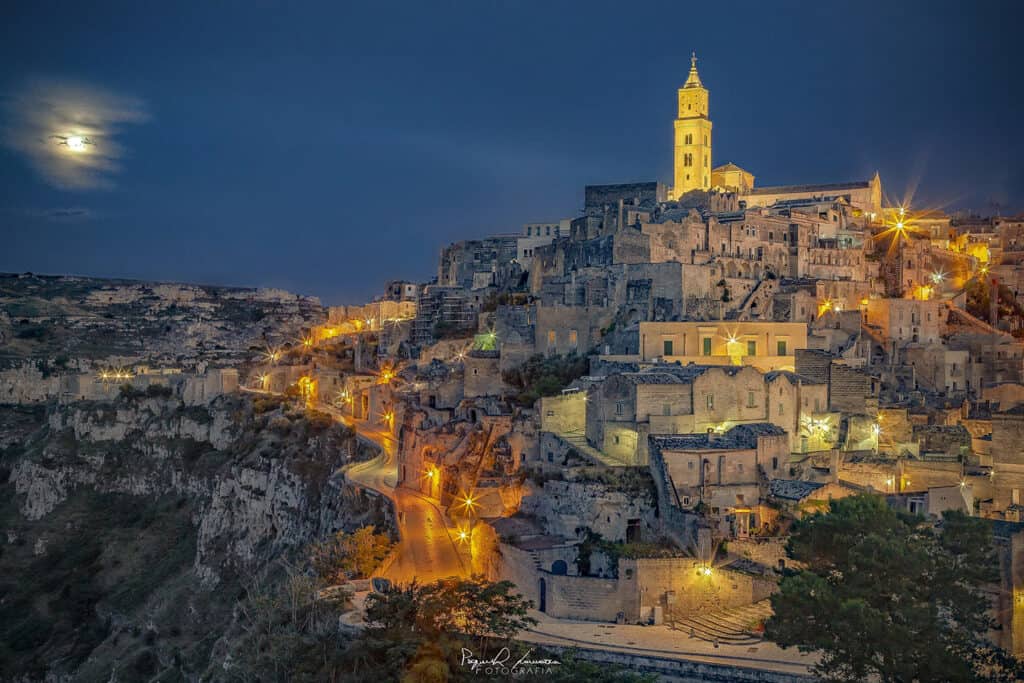
The Sassi di Matera is a series of cave dwellings located in the city of Matera in the region of Basilicata. These dwellings were carved out of the soft tufa rock that is found in the area and were used as homes and businesses for thousands of years.
Today, many of the Sassi have been restored and converted into hotels, restaurants, and shops, and the area has become a popular tourist destination. The Sassi di Matera have been recognized as a UNESCO World Heritage Site for their historical significance.
See Also Tallest Buildings in Italy
Italy’s rich architectural heritage, spanning ancient Roman marvels like the Colosseum, Byzantine splendors such as St. Mark’s Basilica, and modern innovations like the Vertical Forest, highlights a fascinating evolution. From Gothic cathedrals to Renaissance palaces and Baroque masterpieces, each structure tells a unique story of artistry and cultural significance. Explore how these iconic buildings continue to shape and inspire the world of architecture today.










